Fuzzy Memories
Fuzzy Memories
A Q&A with Nicholas Fox Weber, author of
The Art of Tennis.
By Patrick Sauer
November 6, 2025
Fuzzy Memories
A Q&A with Nicholas Fox Weber, author of The Art of Tennis.
By Patrick J. Sauer
November 6, 2025
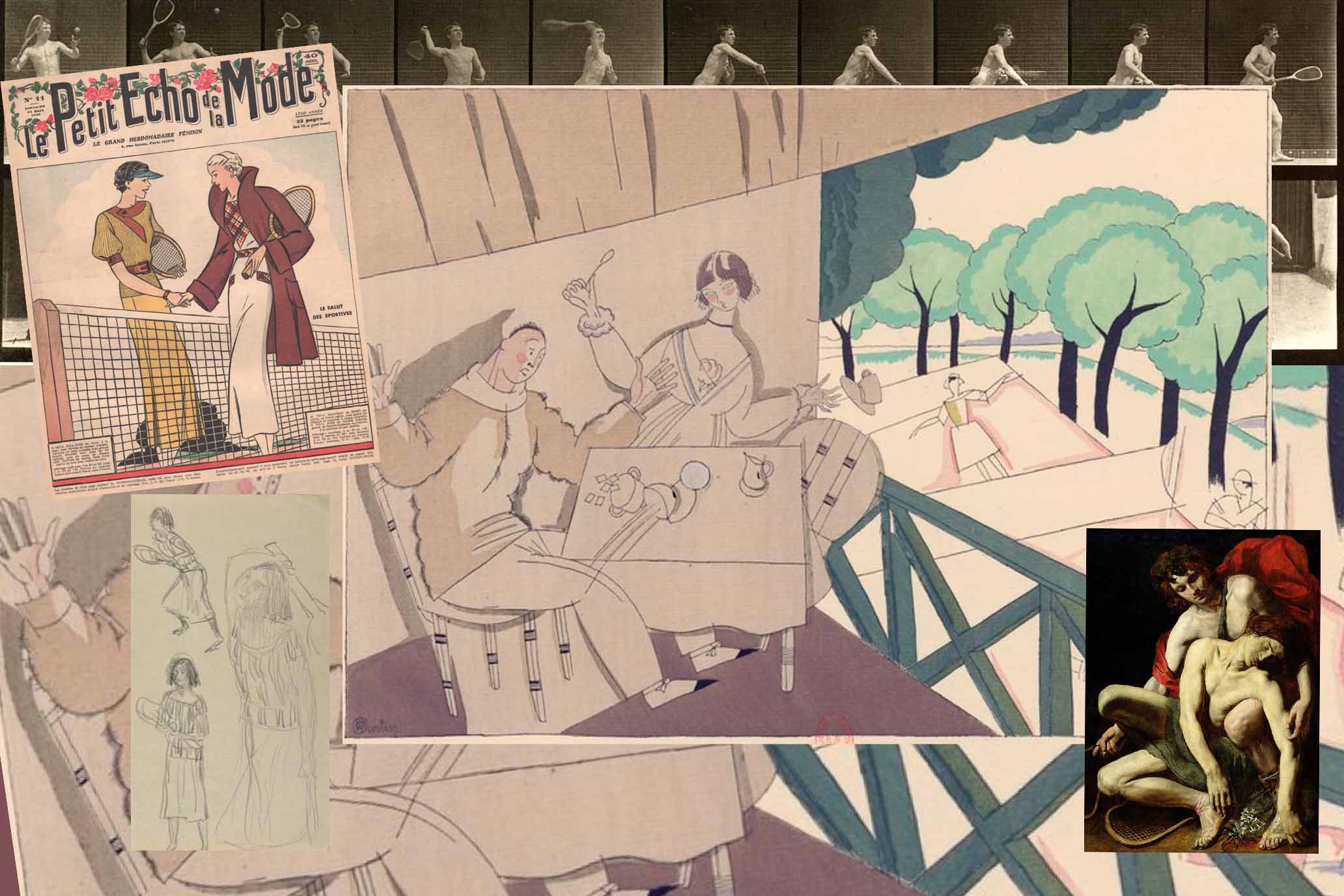
If asked to describe the ideal of tennis artistry, most fans would pull from a familiar canon: the angled dead-on-arrival drop shot, a feathery one-hand backhand slice, a down-the-line buggy whip forehand, a leaping at-the-apex overhead smash, a perfectly placed just-inside-the-baseline lob, or perhaps the Serena Special, a walk-off ace-up-the-tee. Outside of the underarm quick serve, there is no wrong answer—Michael Chang cramping in his ’89 French Open victory excepted—the beauty is in the eye of the match-watching beholder.
There is, however, an entirely different way of answering the question. Proper responses could include Caravaggio, William Shakespeare’s Henry V, Rene Lacoste’s alligator (er, crocodile?), Katharine Hepburn, Diego Rivera, Tom and Jerry, Babar the Elephant, Errol Flynn, or former First Lady Jacqueline Kennedy, all of whom warrant a sporting mention in Nicholas Fox Weber’s superb new book The Art of Tennis.
Weber, who turns 78 next month, is the acclaimed author of 15 art and architecture books and a lifetime tennis devotee who only began opining on the sport, in print, in the past decade. He’s made up for all that lost time and more in The Art of Tennis, as it’s one of the most idiosyncratic, enlightening, and enjoyable books about the inspired creativity the sport has given rise to that I’ve come across. Weber introduces a menagerie of fashionably erudite characters like Bunny Austin, the man who, at Wimbledon 1933, broke down the no-shorts barrier, and art critic Henry McBride, who had a “musical portrait” written in his honor called “Tennis” with notes and tempo listed as “point, set, match.”
Weber makes time for familiar players of the past like Bill Tilden, Helen Wills, Althea Gibson, and Guillermo Vilas, but the author goes wherever the ball bounces. There are detours to the Middle Ages, to mid-century Broadway, to present-day Africa, and to meet a few of his personal friends, including his dogged tennis partner Nick Ohly. There is a warm chapter on Ohly, who died of a massive heart attack during a midday lawn match in New Haven, Conn., one of countless rolling matches over a long friendship, moments after saying to Weber with a smile on his face: “Let’s keep going. It’s such a nice day, and the game is so much fun.”
It really is. From his apartment in Paris, Weber spoke to The Second Serve about the art—and soul—he called upon in writing his first book about the game he loves.

“Animal Locomotion,” Plate 294, Eadweard Muybridge

“Animal Locomotion,” Plate 294, Eadweard Muybridge
I swear this isn’t asked in jealousy, but how did you come to live in both Ireland and Paris?
In my early 20s I fell in love with a remote corner of West Cork, so in the ’80s my wife, Kathy, and I bought a small house overlooking the sea. Over the years it’s become more and more of our home. The town didn’t have anywhere to play tennis, so we built a lovely court set out in a field. It’s got fake grass, an Astroturf that survives the rain very well. It’s wonderful.
I’d been to Paris a fair bit in my life, but in 1999 I started going in earnest. I was working on a biography of the architect Le Corbusier, and we enrolled our daughter in a Parisian high school. We planned on doing one term. Twenty-five years later, it’s like neither of us ever left. We live near the Bon Marche, so I can bike to Roland-Garros. I won’t mention the ridiculous price I paid for great seats for an Alexander Zverev match at the last French Open, but seeing him at eye level was quite an experience. Most of my life is in Europe now. In the last year, I spent maybe a grand total of six weeks in Connecticut.
As far as your personal connection to tennis, have you always played, and are you any good?
As a kid I played on a public court, out there with my father teaching the Western grip. At summer camp I learned on clay, and from there I went on to full-time tennis camp. Unfortunately, I was never very good. Although at 77, I feel like I’m playing fairly well, which is not something I would’ve said at 16. In my 40s I decided to improve my French-speaking skills and my tennis as a way of handling the midlife crisis. In Paris I encountered a wonderful teaching pro from Cameroon, Pierre Otolo, and that relationship was the beginning of a marked improvement in my game.
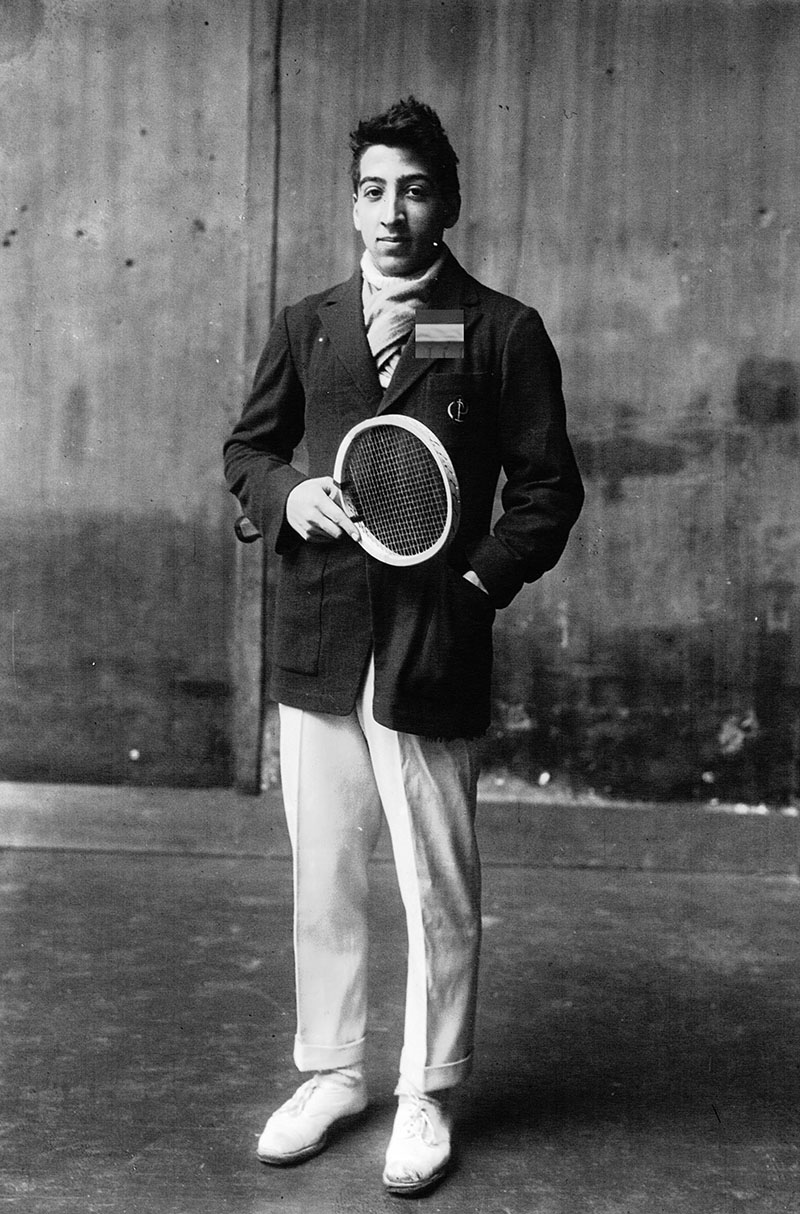
Rene Lacoste

Rene Lacoste
The title of the book is interesting because what it’s “about” is self-evident but also doesn’t capture the book’s unique spirit or structure. So, what’s your nutshell description of The Art of Tennis?
Let me back up a bit and explain how it evolved. It wasn’t even 10 years ago when I started writing for Courts magazine. It was published in French by a Belgian man who didn’t edit me. He printed and translated whatever I wrote, so I was able to follow the muse. Once I began writing tennis essays, I couldn’t stop. I became so curious about tennis-related artifacts I’d come across, like a porcelain plate in the Musée d’Orsay decorated by painter Édouard Vuillard. It was commissioned by Claude Anet, the first French national tennis champion, for his wife, with the sumptuous name Alice Nye Wetherbee. A little sleuthing revealed Anet’s given name was Jean Schopfer; his pseudonym came from a lover of French Enlightenment philosopher Jean-Jacques Rousseau. Schopfer moonlighted as an art critic, gallery owner, and author of multiple books, including a firsthand 1917 journalistic account of the Russian Revolution, and a novel director Billy Wilder later adapted as Love in the Afternoon, the 1957 movie starring Gary Cooper and Audrey Hepburn.
Fascinating guy, right? This is a long way of saying the book is about how tennis shows up in painting, sculpture, fashion, ballet, literature, etc., all the different art forms. At the same time, it’s about tennis as an art form unto itself.
The Art of Tennis isn’t structured chronologically or organized by defined sections, and each chapter works as a stand-alone, so how did you land on the through-line flow?
I can’t exactly explain it, except that one thing just sort of fell into place right after another. Now, if one chapter had a certain degree of humor or frivolity, I’d shift to one that was more serious in nature to follow, but it wasn’t a struggle piecing it together. It would be pretentious to compare my method to the way a composer composes, the way they move music in a direction that feels right, but the order of the book came along on its own.
There aren’t many descriptions of individual tennis matches or various strokes per se, but one motif you go back to multiple times is the beauty of a proper serve. What thrills you about a perfect point-starter?
It starts with the fact I’ve been trying to improve my serve since I was 8 at Tamarack Tennis Camp up in New Hampshire. Our wonderful tennis pro, Jack Kenney, said I had a “telephone booth serve,” meaning I was stuck in the tight glass enclosure and not reaching far enough in any direction. I’m not a natural athlete, so players who master the serve amaze me. Just think of the joint timing of the toss, which comes from the weaker hand, and the serving motion that requires the rest of the body. It’s amazing.
I took some lessons this summer, and the teacher actually helped improve my serve. He had great pointers on tossing the ball a bit more out of front and stepping into it the correct way. I’m serving with more consistency than I ever remember.

"Le Tennis", Charles Martin

"Le Tennis", Charles Martin
It’s good to know one is never too old to pick something new, but also that you’re still, as you put it in the book, “the intellectual who always wanted to be a jock…”
To this day, I watch a tennis match and have the complete fantasy of being on the court hitting these extraordinary shots. In reality, I’m thrilled to still be out there playing. I’ve been diagnosed with Parkinson’s.
Sorry to hear that.
Thank you. One thing those of us with Parkinson’s are supposed to do is move around a great deal and keep up our coordination. I work out with a trainer every day. Part of our routine is to play Ping-Pong and tennis. It’s my happily self-imposed treatment.
I’m glad tennis is still part of your life and equally glad you didn’t mention pickleball…
In Connecticut, I play on three public courts, two of which have been turned over. There are many advantages to living in France. One of them is that you hear very little about pickleball.
Let’s talk about some of the specific chapters, starting with “Green or Yellow?”
I run the Albers Foundation, which is dedicated to the preservation and promotion of the works of Josef and Anni Albers, the brilliant Bauhaus artists. Josef was a color theorist who devoted his life to the idea that color doesn’t exactly describe anything. If I say red, some people think of the Coca-Cola shade, others might think of LEGO. Both are correct, but neither are the same. I started to consider Josef’s notion in terms of tennis balls. The majority of people say they’re yellow, but there are plenty who swear they’re green. Which is it? How can a color be the equivalent of both a lemon and a lime? The question led me to the discovery of how tennis balls were white until 1967, when Sir David Attenborough got permission from the BBC to broadcast in color. Tennis ball colors changed because the color of the entire spectrum changed, which Josef would’ve loved. There are no absolutes when it comes to colors. Even tennis balls.
Walking down a London street a few years back, you spotted a Russian Fabergé tennis trophy in a storefront window, which upon closer inspection was awarded to the mixed-double champs at the 1912 lawn tournament in Saint Petersburg. Why was this discovery so important to you?
As a student at Columbia, I had a love for the works of Tolstoy and Turgenev, and was fascinated by the extremes of life in 19th-century Russia. I came across this fancy New York shop that carried luxurious Tsarist artifacts. I couldn’t afford a single thing in there—although for my 21st birthday my older sister bought me a medal from there, which, in Russian, is for “meritorious police service.” I treasure it and still use it as a key chain.
Anyway, I’ve always been attracted to these lavish, expensive items that have no bearing on my actual life, so I was completely taken with the elegant simplicity of the Fabergé tennis trophy. It was an aha moment as it hit me that the ones given out to champions today are ugly, unwieldy, and, worst of all, not emblematic of the sport. These ornate trophies are all over the place, which is not how you play successful tennis. The trophies should be streamlined, lean and mean. It’s possible this chapter contains a bit of envy as I don’t have a room filled with tennis trophies engraved with my name.
On that fitting Russian note, you have a chapter on Vladimir Nabokov. What about his tennis writing in Lolita rings true to you, especially given you first probably read it more than half a century ago?
This question might be better suited for psychoanalysis. Memory is a blur, but the first thing that comes to mind are the fetching young women I played tennis with as a teenager. Nabokov describes things so exquisitely, you can feel the atmosphere on the tennis court. It’s a sport that plays well for an ingenue, which he captures, but also pompous men of bluster like Humbert. I have a fondness for depictions of puffed-up, arrogant tennis types, the ones found on New Yorker covers.
This isn’t in the book, but here’s a real-life example. The Swiss actor Maximilian Schell was a collector of Josef Albers’ art and played an important role in Anni’s life. We became close friends when I wrote her biography and kept in touch. We couldn’t have been less like one another—Max was dark and handsome, I never dated Princess Soroya of Iran—so there was a bit of a rivalry thing going on. For years he’d repeat, “We should play tennis sometime,” but we never did. One morning, after an overnight flight to Munich, I met up with Max, and he decides today is the day we play a match. I’m fatigued, had gotten very little sleep, didn’t have a racquet or even any clothes. I had to wear Schell’s whites. He’s bigger than me, so I’m out there on the court barely holding my shorts up. But my competitive instincts—seasoned with a degree of rage—got ahold of me. Jet lag and all, I beat him in straight sets.
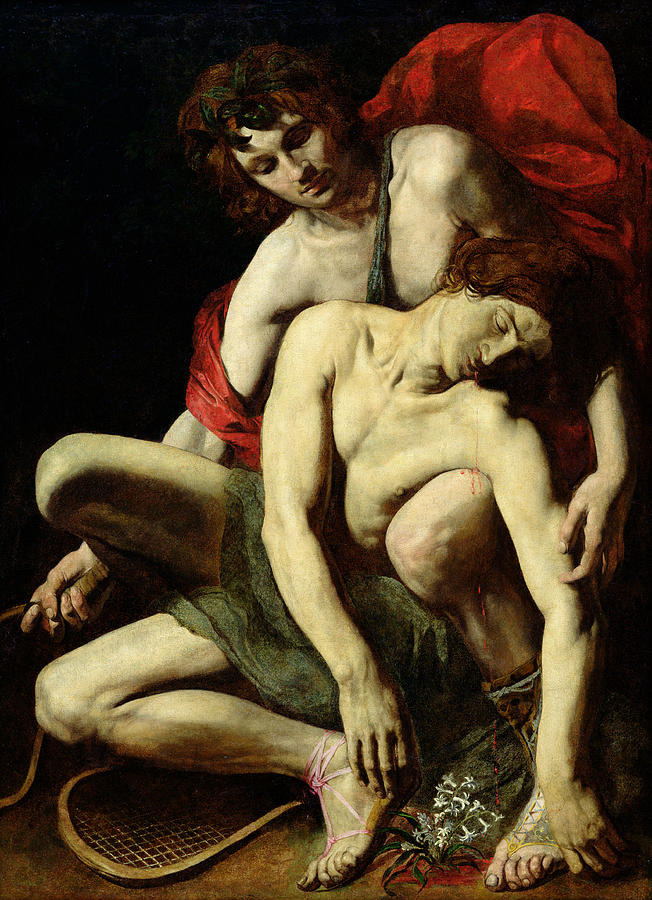
"The Death of Hyacinth", Francesco Buoneri

"The Death of Hyacinth", Francesco Buoneri
There you go. How many everyday players can say they whupped an Academy Award winner on his home court?
Guessing not many. As a claim to fame, I’ll take it.
My favorite chapter is “Anyone for Tennis,” which tracks the long, convoluted history of that particular cliché. What surprised you while digging into the phraseological bit?
I have a fuzzy recollection when I was young of someone walking into a room and, apropos of not actually heading out to the court, saying, “Tennis, anyone?” I was baffled; where did that even come from? And then, my God! One of the earliest mentions comes from a young theater actor named Humphrey Bogart? Who walked out and loudly said it to clear the stage of non-lead actors? And then in interviews over the years, Bogart allowed that yes, he was the first to say it, but also denied he ever said it all? There’s also the lingering question of whether it originated as “Tennis, anyone?” “Tennis, anybody?” or “Anyone for tennis?” The phrase’s lineage includes George Bernard Shaw, Somerset Maugham, Bob Hope, Eric Clapton, and Monty Python. The idea that this goofy enduring expression—which, in Billy Wilder’s 1954 film Sabrina, represented not the actual sport but, as I say in the book, “a happy-go-lucky pleasure-seeking rich boy”—contains truth, a lack thereof, and something in between has long intrigued me.
I’m fairly certain I first heard “Tennis, anyone?” in a Looney Tunes cartoon…
Apparently, after the first time my wife, Kathy, took me home to meet my future mother-in-law, she said to her daughter, “Well, I didn’t expect Bugs Bunny.” The night before our wedding, I didn’t sleep well. The day of, I had all sorts of nervous energy, and I knew the judge was a tennis player. We played three sets before the ceremony. Next year, Kathy and I celebrate our 50th anniversary.
It’s not in The Art of Tennis, but given the book’s nature, I’m wondering, what did you think of Challengers?
I’ve rarely been so ambivalent about a movie in my entire life. I know the director, Luca Guadagnino, we were supposed to work on a film about the Alberses together. I was totally biased in favor of Challengers, but it is just so extreme. There are moments where I just don’t know what to make of it, except to say it’s got a lot of energy.
Lastly, can you please tell me how your Senegalese nonprofit came to be and what part tennis plays in it?
Early on in Paris, I needed to go to a dermatologist, but it felt like an invasion of my teenage daughter’s space to go see hers. I opened the yellow pages and found a doctor named Gilles Degois. It doesn’t get more French than that, so I figured it would be a chance to practice my language skills. He picked up my American accent right away and said a sentence to me, in French, that ended with President Bush. We began to talk about world affairs. He told me he helped run a small charity where doctors went to eastern Senegal four times a year to provide medical care and to continue building a facility. I’m not sure what came over me, but I looked at Dr. Degois and said, “I’d like to go with you.” Knowing these doctors were spending their own money and vacation time to go to an extremely underprivileged part of the world proved life-changing.
Unlike American charities, they run on a shoestring budget. Initially, I simply helped raise U.S. funds. Later, I started a very modest support group to build another medical center in a different rural locale. There was no facility for miles around, so people relied on local cures and inadequate medicine. It took off, one thing led to another, and eventually we built a kindergarten, maternity and pediatric wards, and we’re now working on a small museum. I’ve never been able to comprehend why some of us are lucky enough to be born into fortunate circumstances and others aren’t. I’m not from an aristocratic family or anything, but I certainly got to play tennis growing up, so why shouldn’t other kids? Tennis is how my instructor and friend Pierre Otolo was able to provide for his family. Pierre was born into poverty, but he crossed paths with Yannick Noah’s father, who ran a junior team of Black players that opened up a world of opportunities. Pierre frequently returns to Cameroon, using tennis as a springboard to impact hundreds of lives in positive ways. He’s served as another inspiration to me.
About a dozen years ago, we built a court in the village of Sinthian. Incredibly, it’s become a gathering place where we provide medical care and supplies, and hold all types of recreational activities. I believe everyone should get the chance to play tennis. It’s one of the joys of life, and nobody had ever played before. In Senegal, the first person I played with was the young man who drives me everywhere. Those roads are too tough for me to navigate. One morning, he drove me to the courts. I asked him if he wanted to join me on the court. He’d never held a racquet, so the first thing I did was show him how, just like I was taught all those years ago.
Every time I visit Senegal, we play tennis.
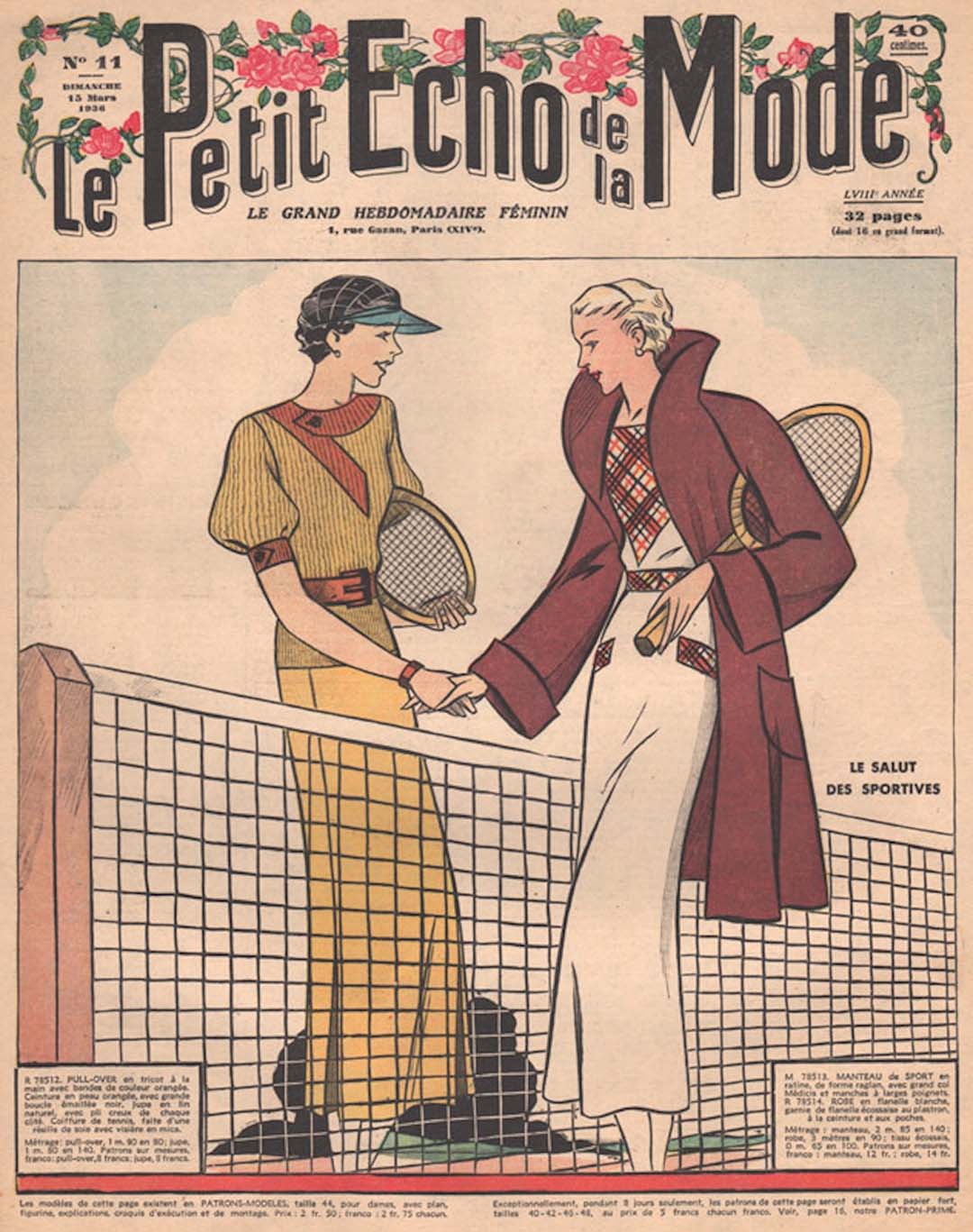
Le Petit Echo de la Mode, 1936

Le Petit Echo de la Mode, 1936

PURE, ORIGINAL TENNIS — SIGN UP!
An October Surprise
An October Surprise
An October Surprise
Nobody told Vicky Mboko and Alex Eala they should be phoning it in.
Nobody told Vicky Mboko and Alex Eala they should be phoning it in.
By Giri Nathan
October 31, 2025
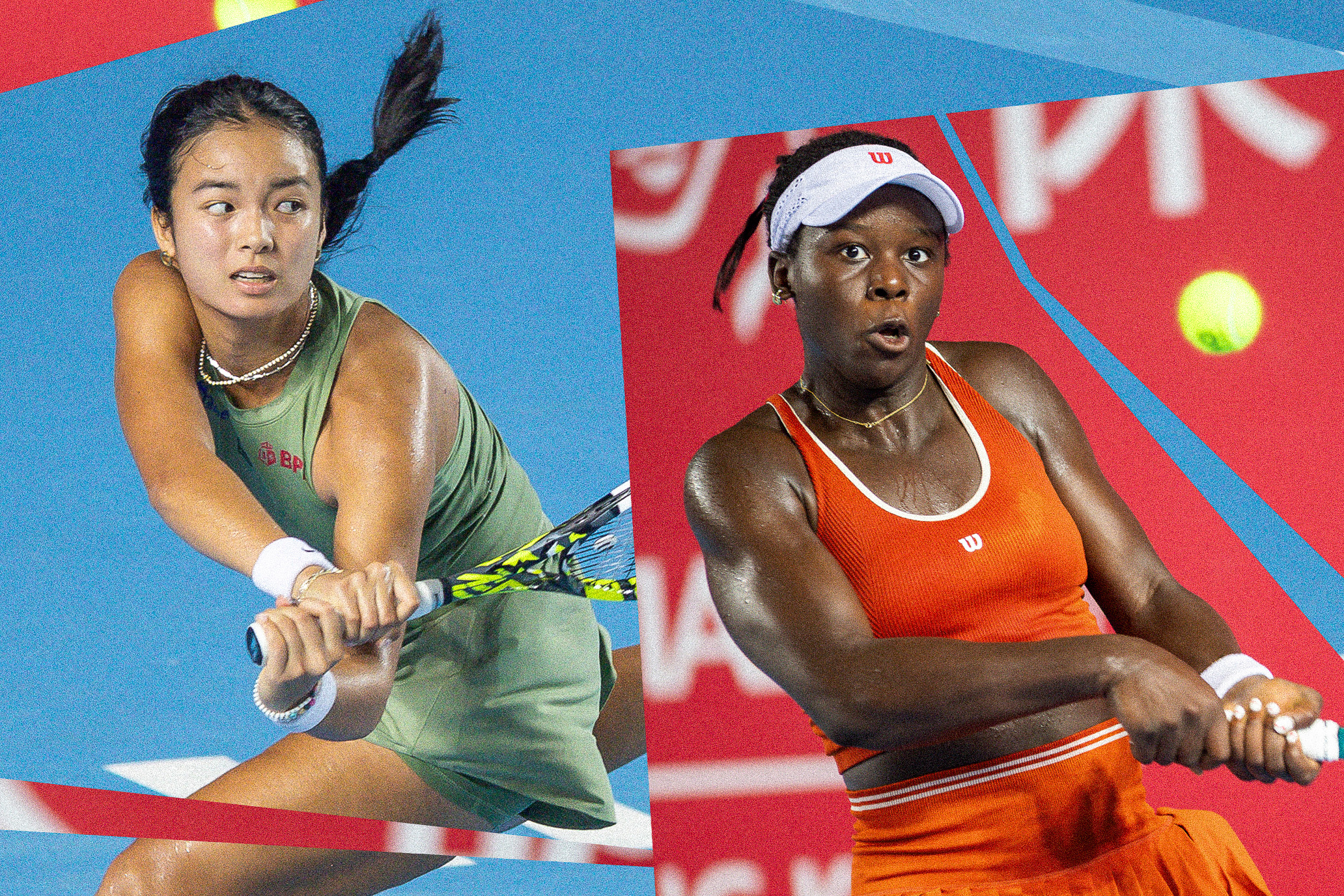
Vicky Mboko and Alex Eala during their corker in Hong Kong. // Getty

Vicky Mboko and Alex Eala during their corker in Hong Kong. // Getty
Just like many professional tennis players, I don’t care all that much about the end of season, but I do love a good narrative coda. Victoria Mboko and Alex Eala were two of the WTA’s youngest and most thrilling breakout players in 2025, and on Thursday they battled in Hong Kong for the right to prolong that season just a little longer. Although Mboko, 19, and Eala, 20, are longtime friends who “get bubble tea together,” as the eventual victor explained after the match, they had never played each other at the pro level. At least they started this potential rivalry with a genuine classic.
Both players had similar triumphs this season, breaking out at 1000-level tournaments. They’d entered as wild cards with little experience and left them as known entities. Eala went first. In Miami, the then 19-year-old reached the semifinals by clearing three former Slam champs: Jelena Ostapenko, Madison Keys, and, notably, Iga Swiatek, who just two years prior had been the guest speaker at Eala’s graduation from the Rafa Nadal Academy. Most remarkable was the fact that the lefty Eala was beating all these players in spite of her rather vulnerable serve, all on the strength of her ground strokes, struck hard from right on top of the baseline. She nearly beat Jessica Pegula in the semifinals, too. That was the high point of the season—it’d be a high point of many careers—but Eala also went on to pick up a WTA 250 runner-up trophy in Eastbourne and a WTA 125 title in Guadalajara, and, at the US Open, she became the first player from the Philippines ever to win a main-draw match at the majors.
For Mboko, there had been some sparks beforehand. A three-setter in Rome against Coco Gauff raised many eyebrows, mine included. But it all came together all at once, in Montreal, in front of the Canadian home crowds. Like her friend, she also dismissed a horde of Slam champs: Sofia Kenin, Coco Gauff, Elena Rybakina, and Naomi Osaka. But unlike Eala, Mboko won the whole title, then just 18 years old. Her tennis was mysteriously well-rounded, blending power, counterpunching, and great hands, but I mainly remember this title as one of the most startling examples of mental fortitude I’d seen in a young player. So many comeback wins, and so many cases where she looked like the more poised one in the face of opponents years older and more accomplished. Incredibly, her Montreal win meant she’d be seeded at the upcoming US Open, despite starting the season outside the top 300. She seemed like a new fixture on tour. In reality, these things are always more complicated. She went on to lose four consecutive first-round matches after her title.
But by the time they met at the WTA 250 in Hong Kong on Thursday, Mboko had stabilized again. Heading into the match, she was ranked No. 21 to Eala’s No. 51. By the time they’d split sets, they looked dead even, and the rally level was getting a little absurd.
My working theory is that the most thrilling tennis matches involve future stars whose serves are still quite dubious. No service hold is taken for granted. And you have no idea what shot they might opt for next, because their ambitions sometimes outpace their present abilities. That roughly describes the back half of this match. There were five breaks of serve in the deciding set. First Eala moved ahead. Once her legs tired, she closed down the net to finish points and excelled there, seizing a 4–1 lead. The Hong Kong crowd thrummed for her. But Mboko, the comeback artist, won every remaining game in the match. Returning at 4–4, 40–30, she clocked a backhand return winner right off the baseline, and that was the last time her victory was ever in question. Mboko won, 3–6, 6–3, 6–4, and the two hugged, with unusual joy. It was a match fought with genuine energy and minimal cynicism between two players who did not seem to accept the notion that October was a time for coasting and burnout, and instead saw their entire careers unfurling ahead of them. Pretty decent recipe for tennis, as it turns out.

PURE, ORIGINAL TENNIS — SIGN UP!
Killer of Giants
Killer of Giants
Killer of Giants
Learner Tien goes to the head of the class.
Learner Tien goes to the head of the class.
By Giri Nathan
October 3, 2025

After capturing a plate in Beijing, Learner Tien has an appetite for more. // Getty
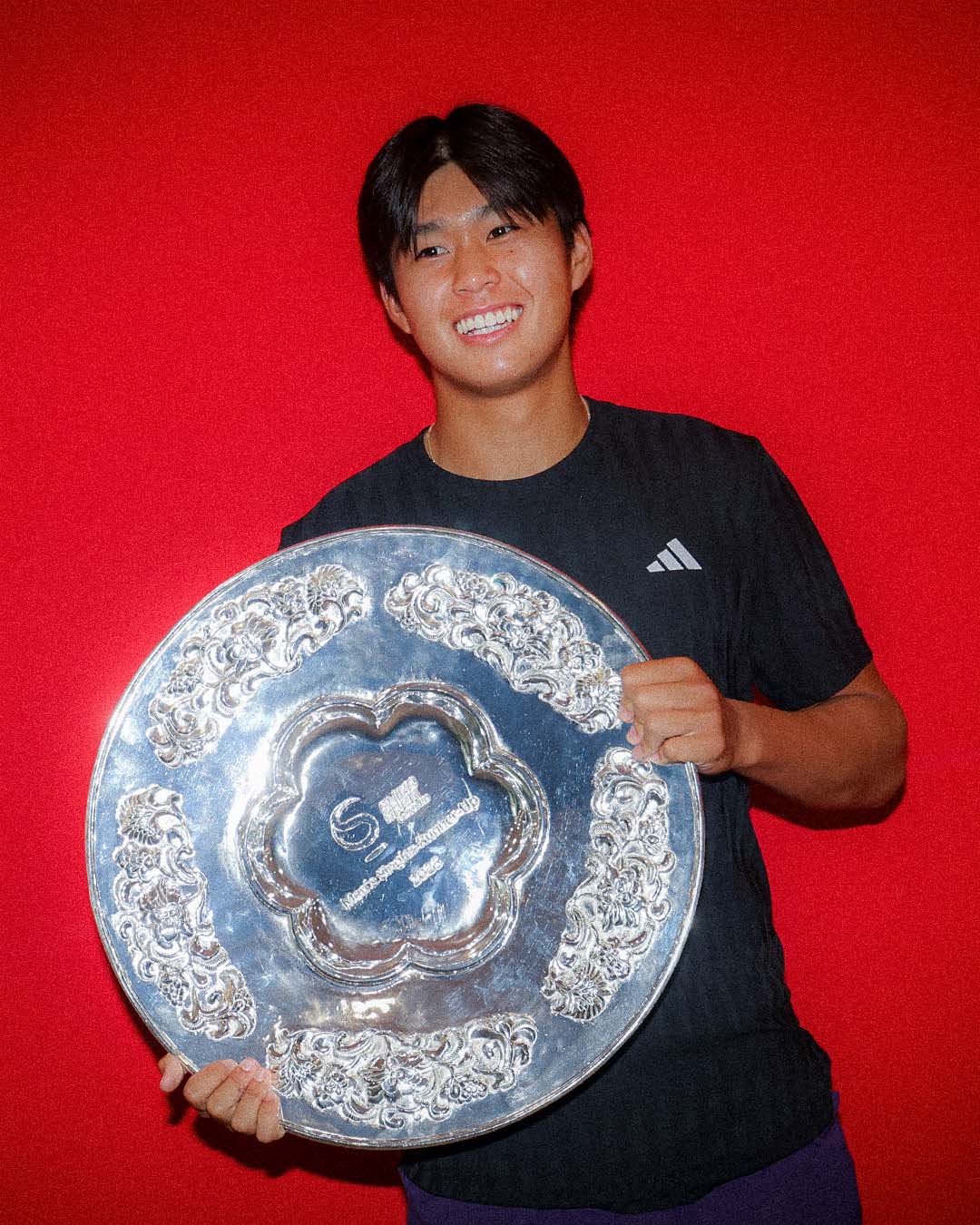
After capturing a plate in Beijing, Learner Tien has an appetite for more. // Getty
As he winds down his rookie season, the 19-year-old Learner Tien has compiled an intriguing résumé. What you see in Tien depends on which frame you choose. Start broad, then zoom in, and things get weirder as you go. When playing against all top 50 players this year, Tien is 9–14. Nothing earth-shattering, but very respectable for a teenager making the leap from the Challengers to the ATP level. What if we filter those results more? When playing against top 20 players this year, Tien’s record is 6–5. And then what if we limit to just those opponents ranked in the top 10? A blistering 5–3 record. This kid from Irvine, Calif., has accumulated more top 10 wins this season than anyone besides Carlos Alcaraz or Jannik Sinner. While Tien’s still working on week-to-week consistency against the tour’s rank and file, he seems to relish every chance to play against the very best players alive. And he’s beating them with one of the most oddly satisfying play styles you’ll see—a mix of sweet feel, sharp angles, lefty guile, and cool temperament.
This week in Beijing, Tien became the third-youngest ATP finalist of the season, behind fellow teen phenoms Jakub Mensik and Joao Fonseca, but on the right day he looks like he has more potential than either of those more-hyped peers. Bolstering his rep as a giant-killer, Tien moved through a brutal draw to get to the final of this 500 event: Francisco Cerundolo, Flavio Cobolli, Lorenzo Musetti, and Daniil Medvedev, though admittedly those last two opponents withdrew from third sets with injury, after Tien had already twisted the match in his favor. By the time Tien finished the championship match, he had gained membership in one of the fastest-growing tennis clubs in the world: people who have been mauled in straight sets by Jannik Sinner on a hard court. But everything that led up to that match was tremendously promising for Tien, who has just moved inside the top 40 and who, just a few weeks ago, hired as coach the greatest-ever Asian-American tennis player from Southern California: Michael Chang.
Just as it went with his coach, Tien’s stature is a common source of skepticism. At 5 foot 11 he lacks the long levers seen in most players at the top of the contemporary game. But the way that Tien is sometimes described, you’d think he was a modern-day Gilles Simon, massaging the ball around the court and playing a purely attritional game. Tien does relish the occasional long rally, but Simon is not at all what I see in him. He doesn’t have the face-melting, point-ending power of Sincaraz—a quality that his fellow teen Fonseca does, in fact, possess—but Tien loads up his ground strokes with plenty of pace and spin. To my eye, he’s got much more pop on his shots than he did this time last year, which is not all that surprising, given that he’s still growing up. (One measure of his youth is the fact that he has said he grew up watching Alcaraz, a quote that instantly reduced me to a heap of dust.)
What I’m most struck by is how mature his baseline game already is. He perturbs opponents of the highest caliber. Tien’s open-stance forehand I find impossible to read, and he seems so nonchalant when changing the direction of a rally. He opens up surprising angles early and often. Whenever he finds an opening, he ends points at the net with soft hands, which might portend a future that’s more all-court than counterpuncher. Perhaps these skills don’t inspire as much buzz as the quantifiable, raw power of Fonseca’s ball-striking, but it works all the same. (Right now, it’s actually working better; Tien just moved past Fonseca in the rankings.) It’s a savvy, supple baseline game that holds up well against big hitters—with Sinner the obvious and understandable exception. A year from now, I bet I’ll be favoring Tien over most opponents when caught in a neutral rally on a hard court. For evidence, just talk to Sascha Zverev, Daniil Medvedev, and Andrey Rublev, all of whom have lost to the new kid this season. (And if you do talk to them, you will hear Medvedev’s outstanding pronunciation of Le-ARN-er, which he has rendered somehow Italian.)
But it’s difficult to claw into the top 10 while needing to win every point from that neutral rally. Cheap and easy points make ATP life much more pleasant. As impressive as Tien’s ground strokes are, his serve is not yet doing him many favors. Often he’s spinning the ball in to get the point started. His coach is aware of this central deficit in Tien’s game and has said that they’re working on it. I recently asked the analyst Gill Gross about some great recent servers who are under six feet tall. It’s not the easiest list to populate, but we agreed that Mattia Bellucci, the 24-year-old Italian, is one intriguing outlier who can crack 130 mph despite standing just 5 foot 9. Tien, who already hits his spots quite well, has room for technical improvements on his serve that could squeeze out some more mph, according to Gross. It’s a testament to Tien’s skill as a returner and baseliner that he’s gotten this far on tour with his current delivery. He’s on the cusp of getting seeded at the Slams. Even a perfectly average serve would take him up another notch again. Leave it to Chang and his new protégé to prove that modest height is no death sentence in this sport.

PURE, ORIGINAL TENNIS — SIGN UP!
Postcard from Tokyo
Postcard from Tokyo
Postcard from Tokyo
Moody vibes under Tokyo skies as Carlos Alcaraz electrifies passionate tennis fans at the Japan Open.
Moody vibes under Tokyo skies as Carlos Alcaraz electrifies passionate tennis fans at the Japan Open.
Photography by David Bartholow
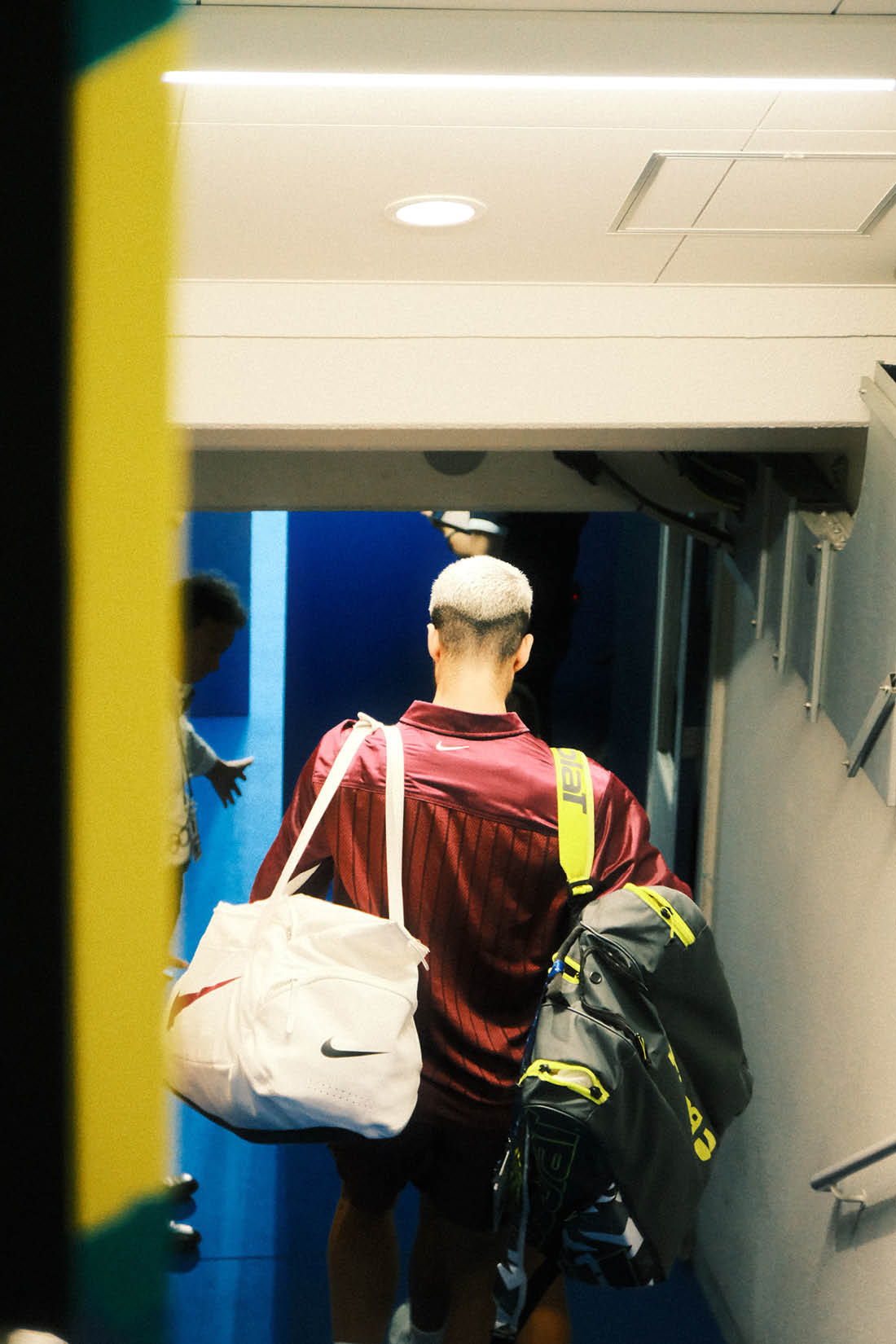
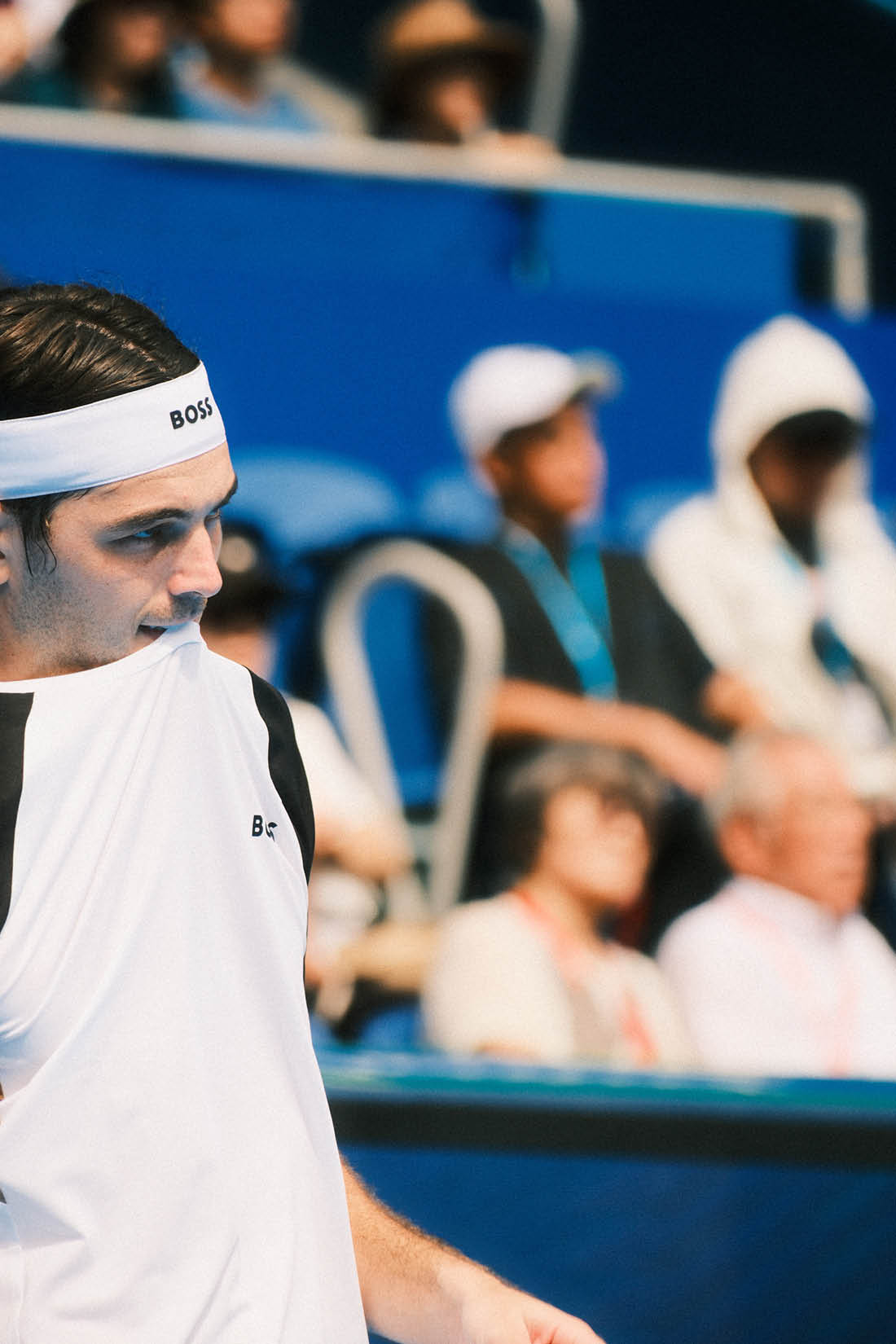


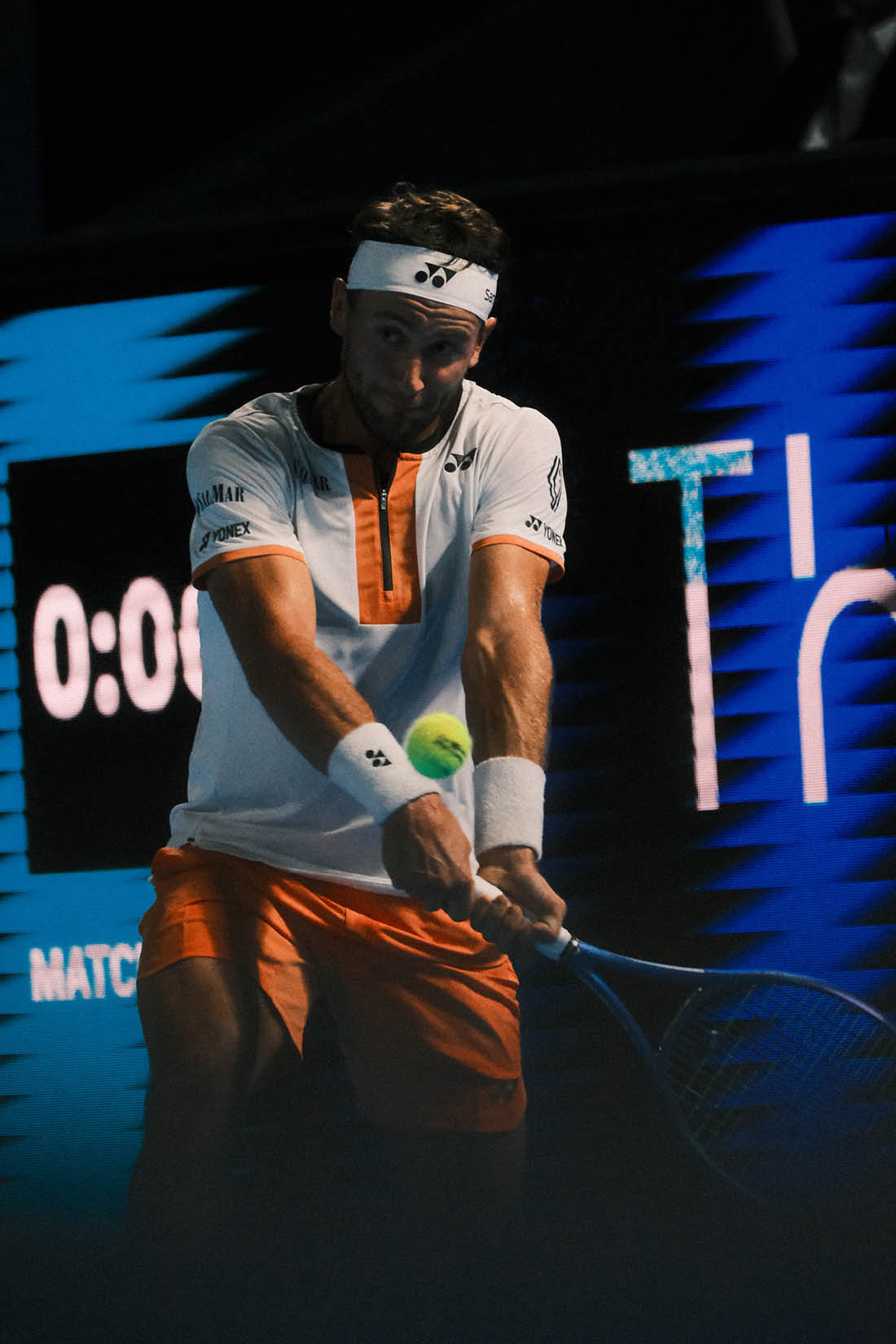
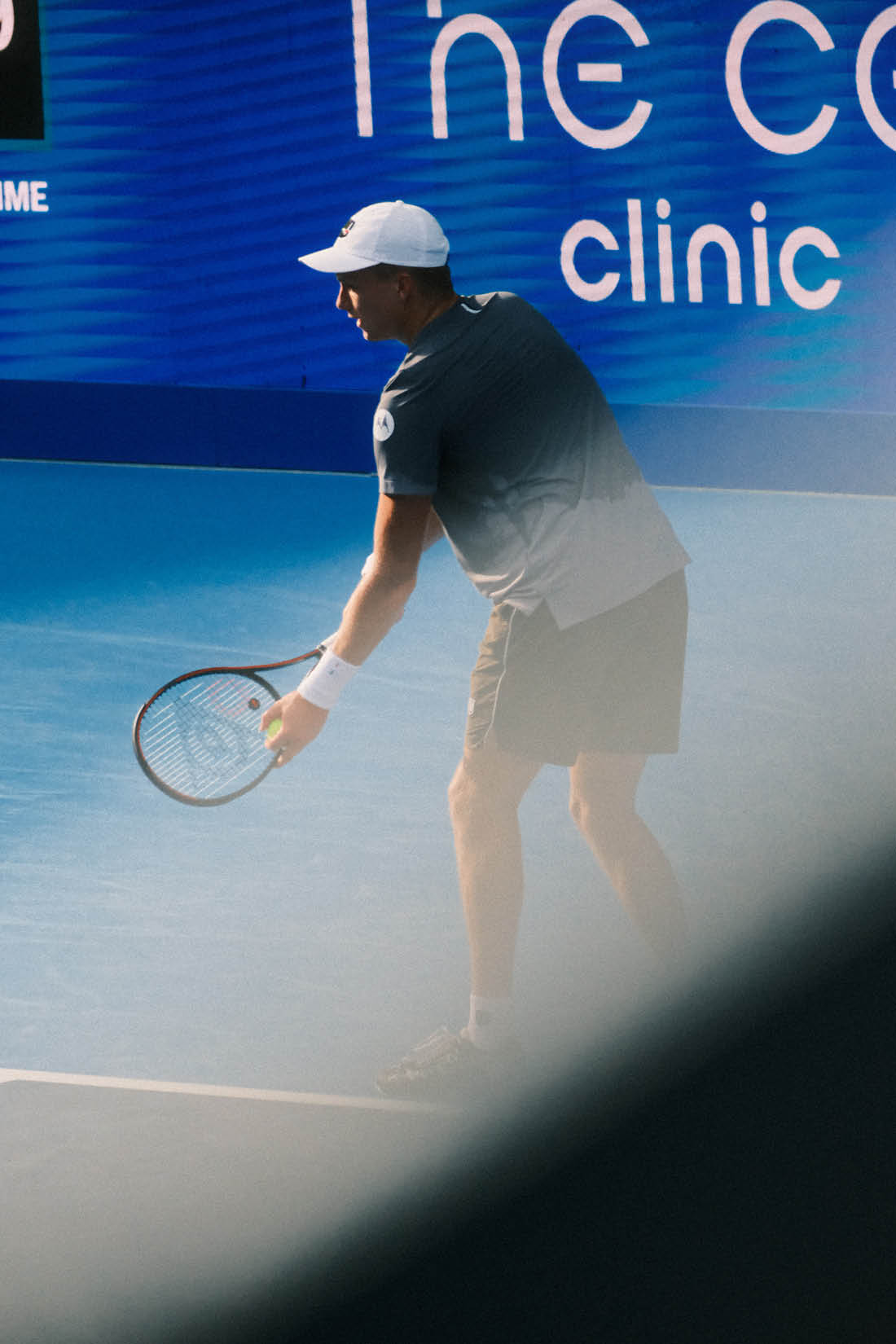


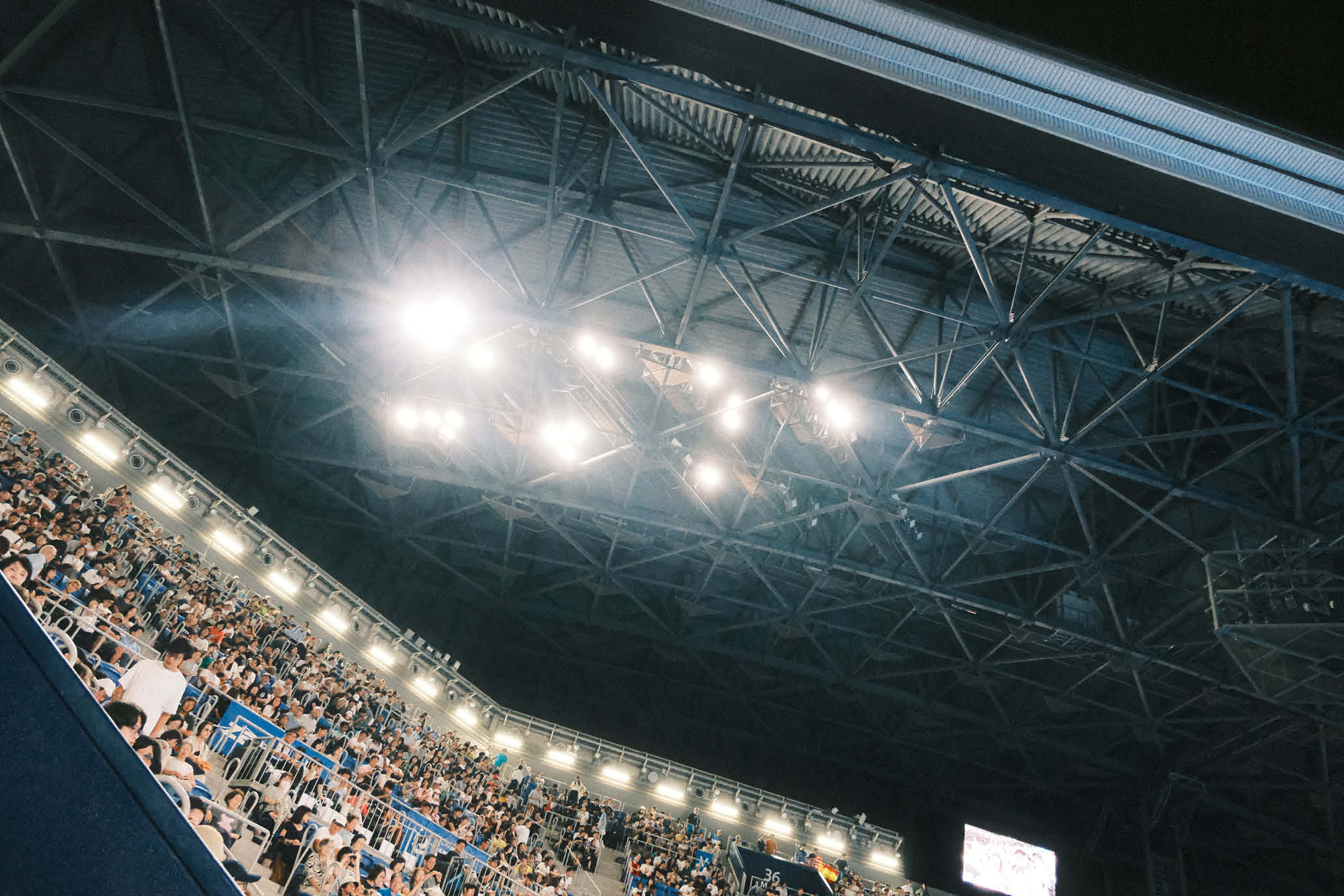

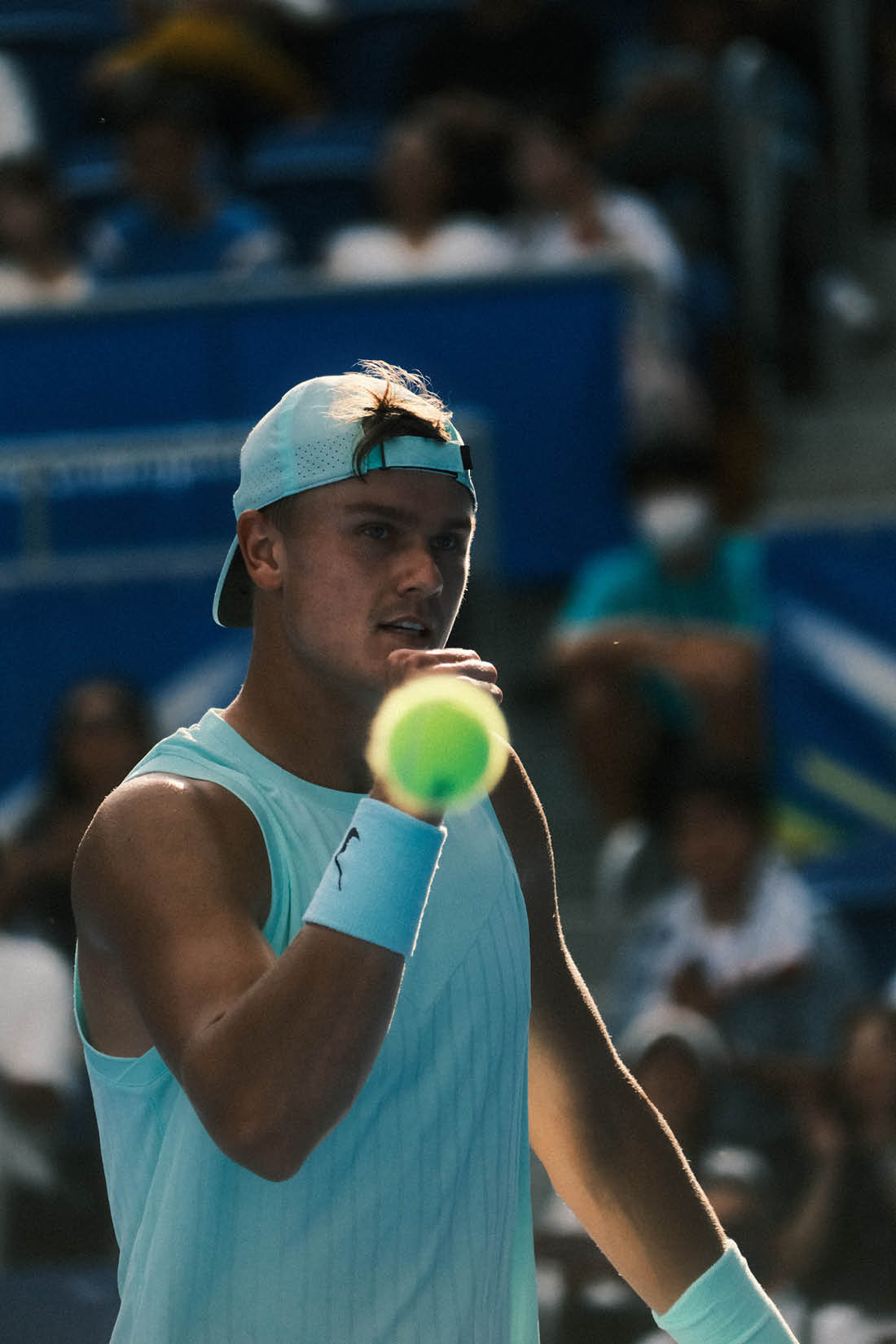




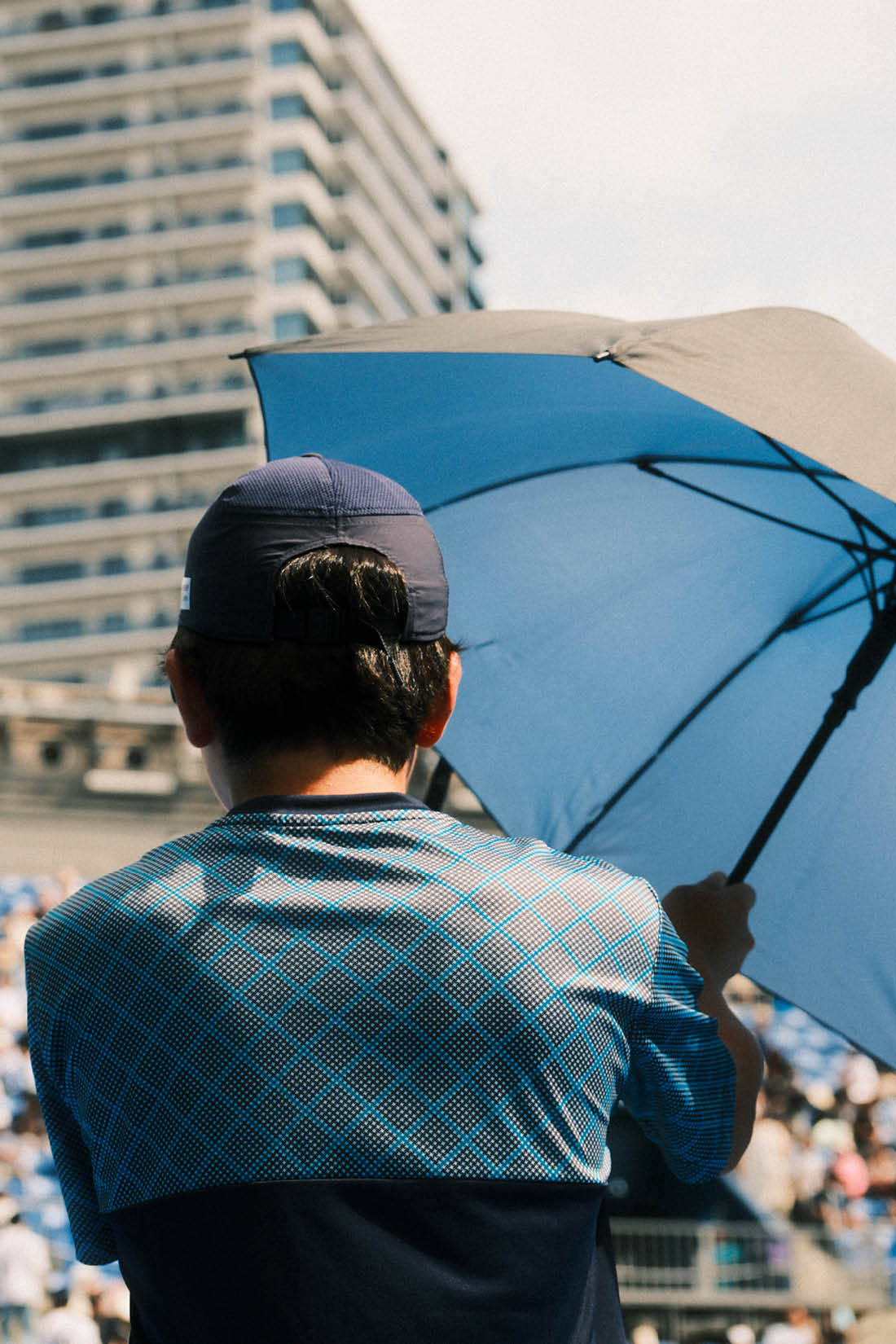


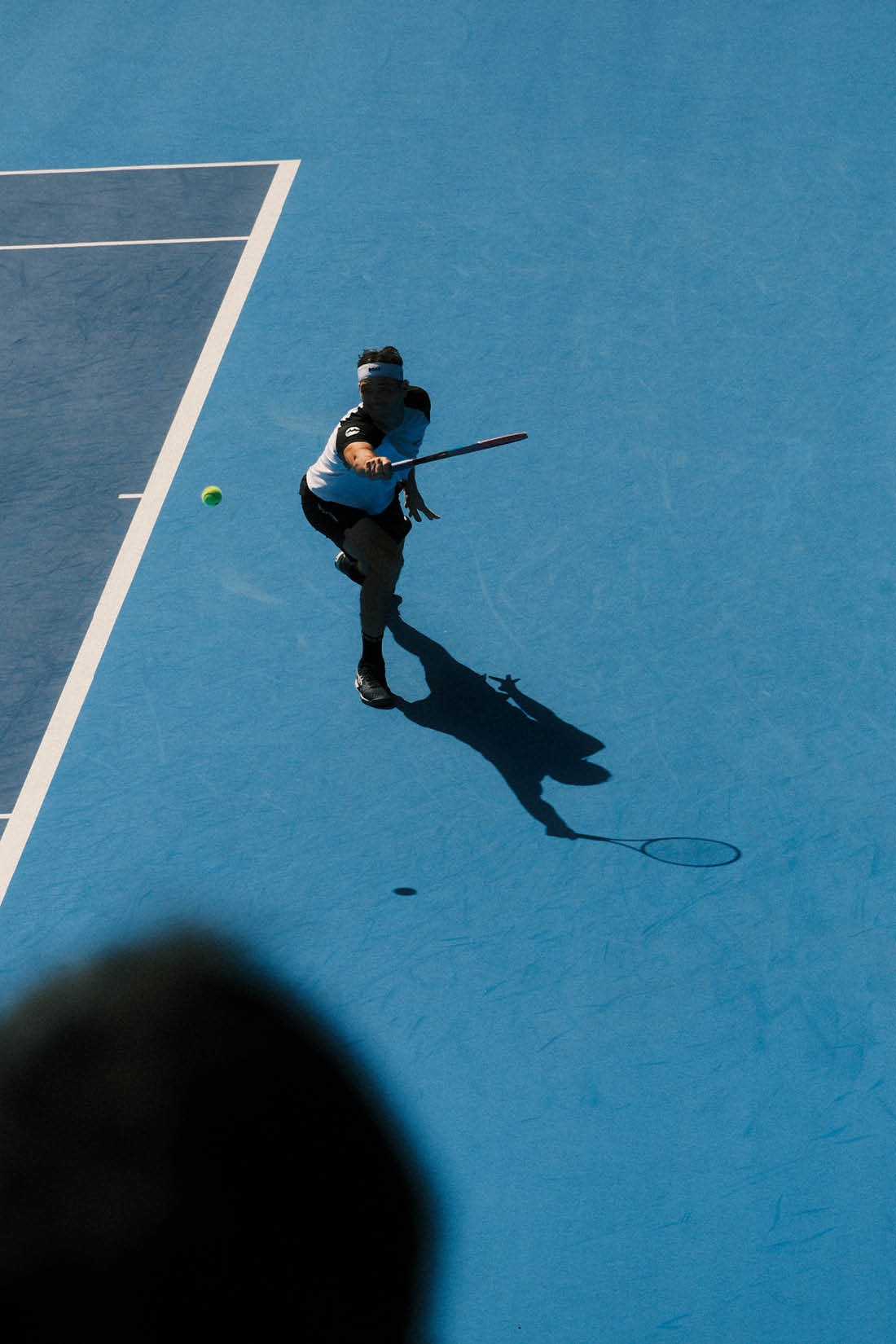
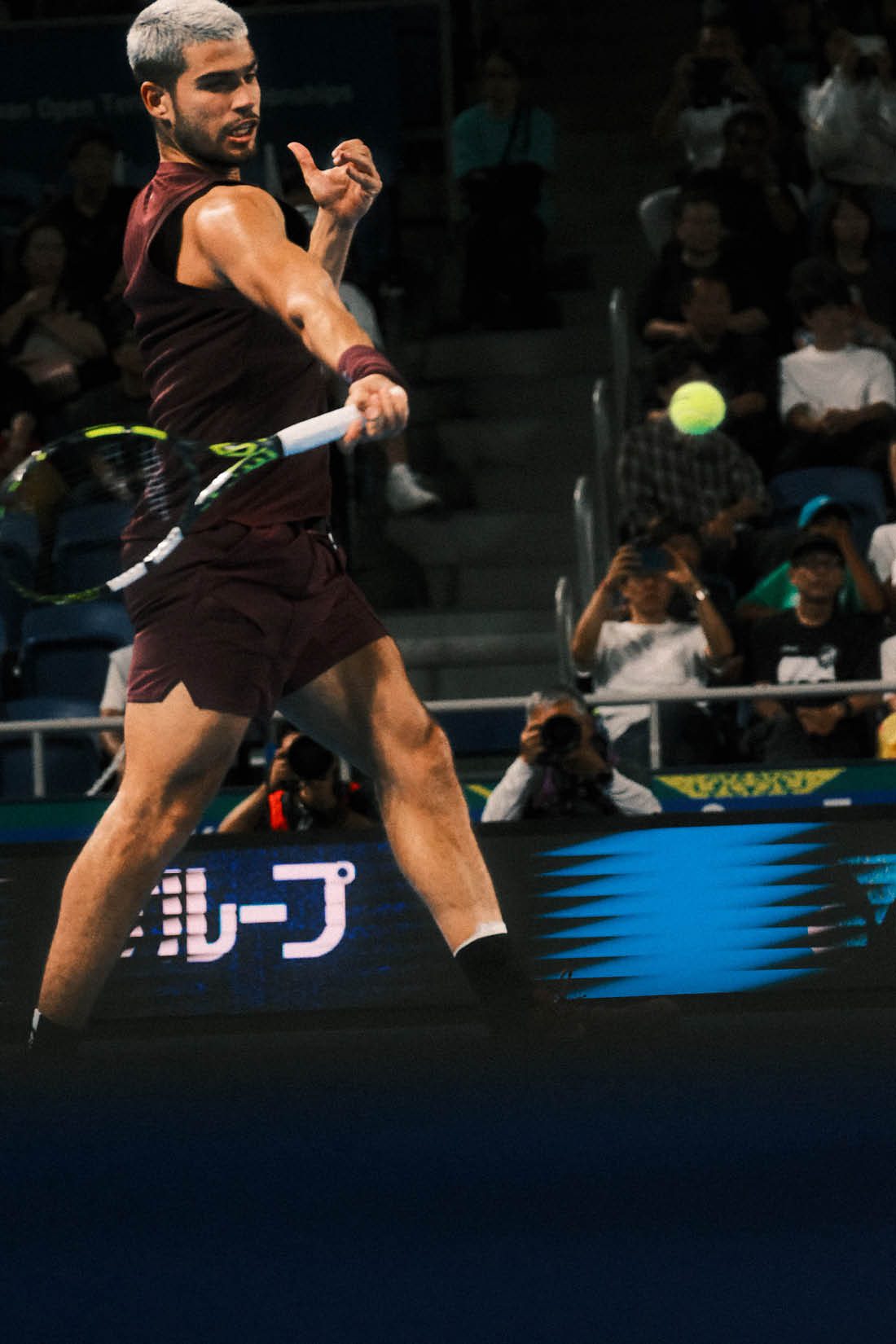


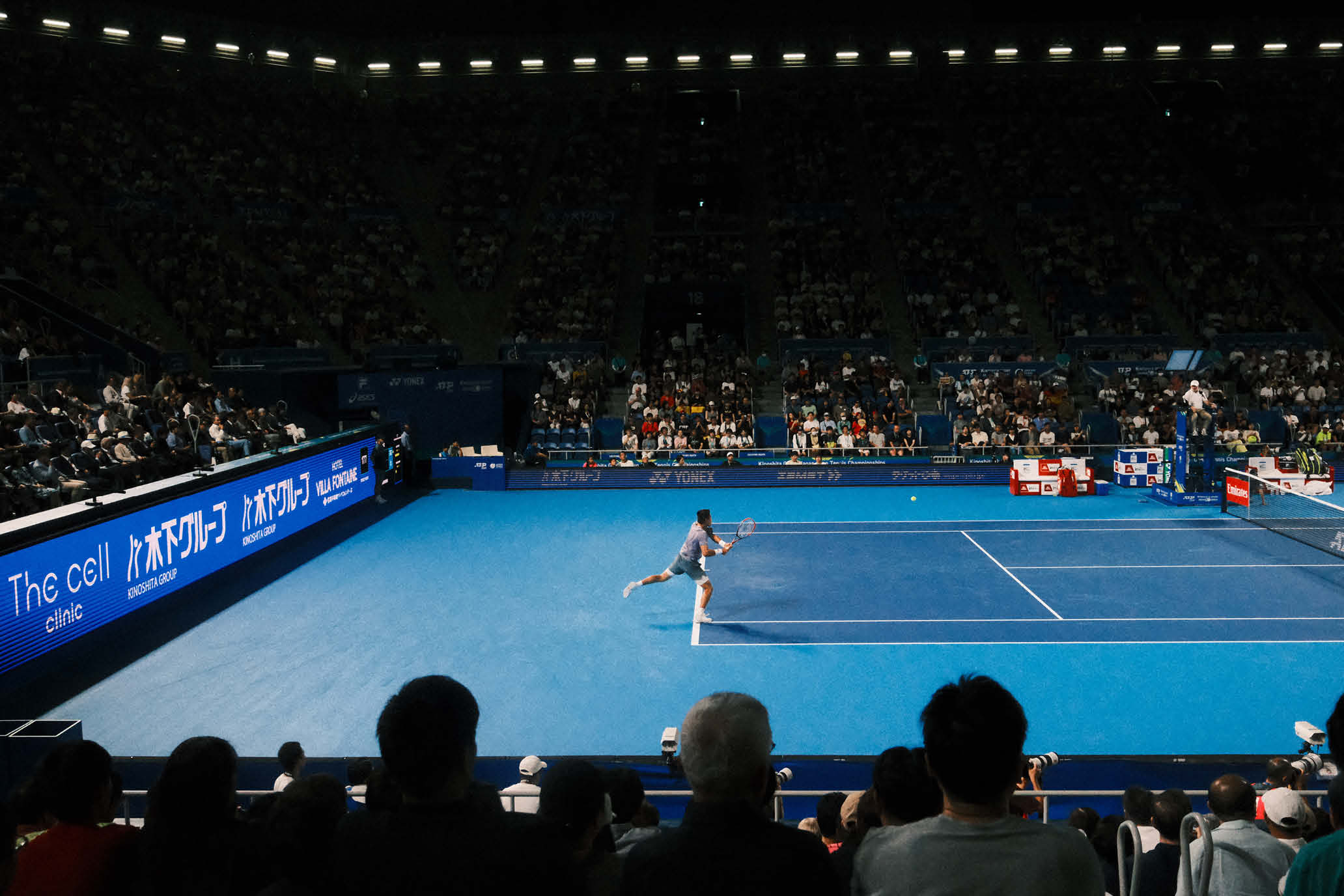






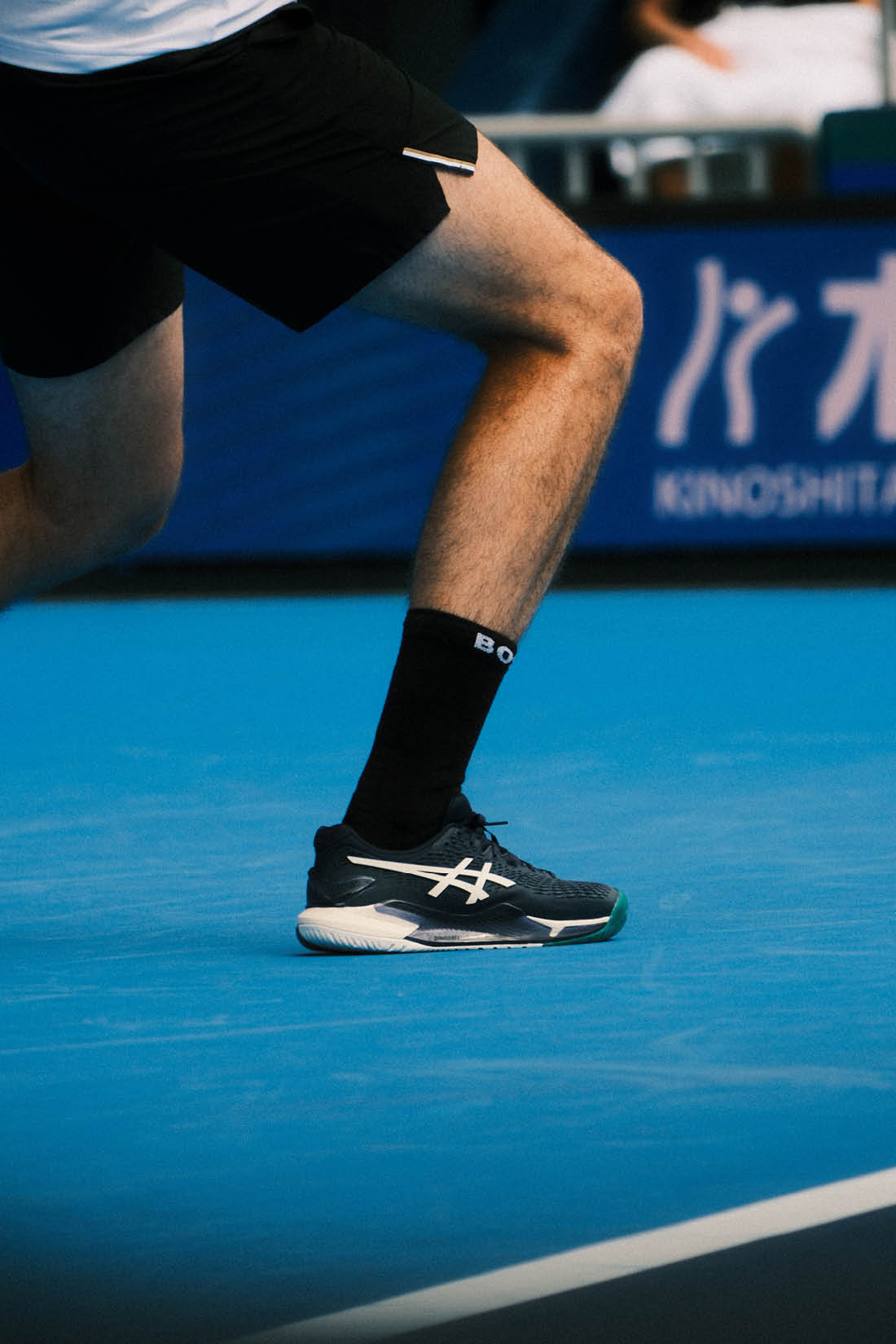


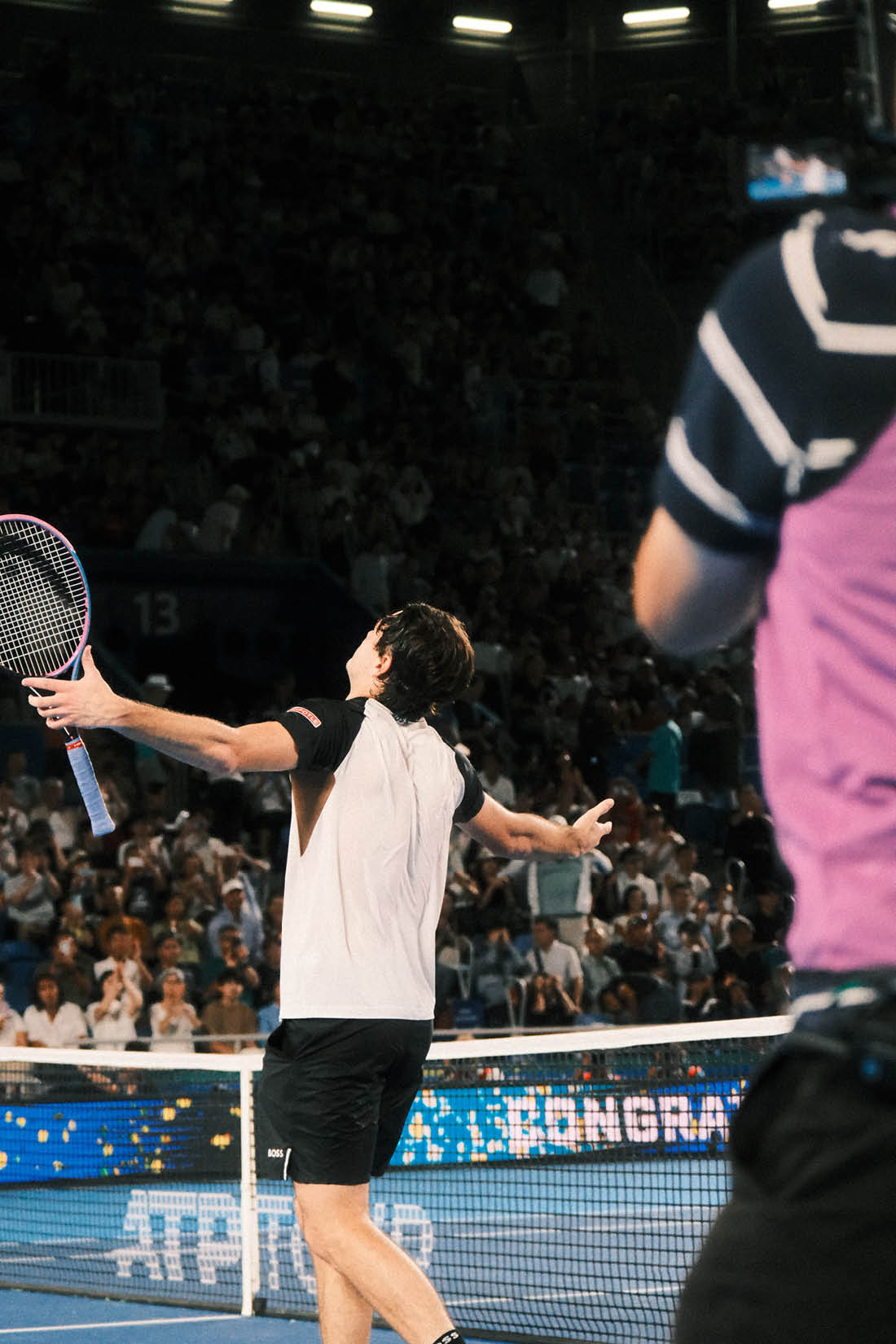
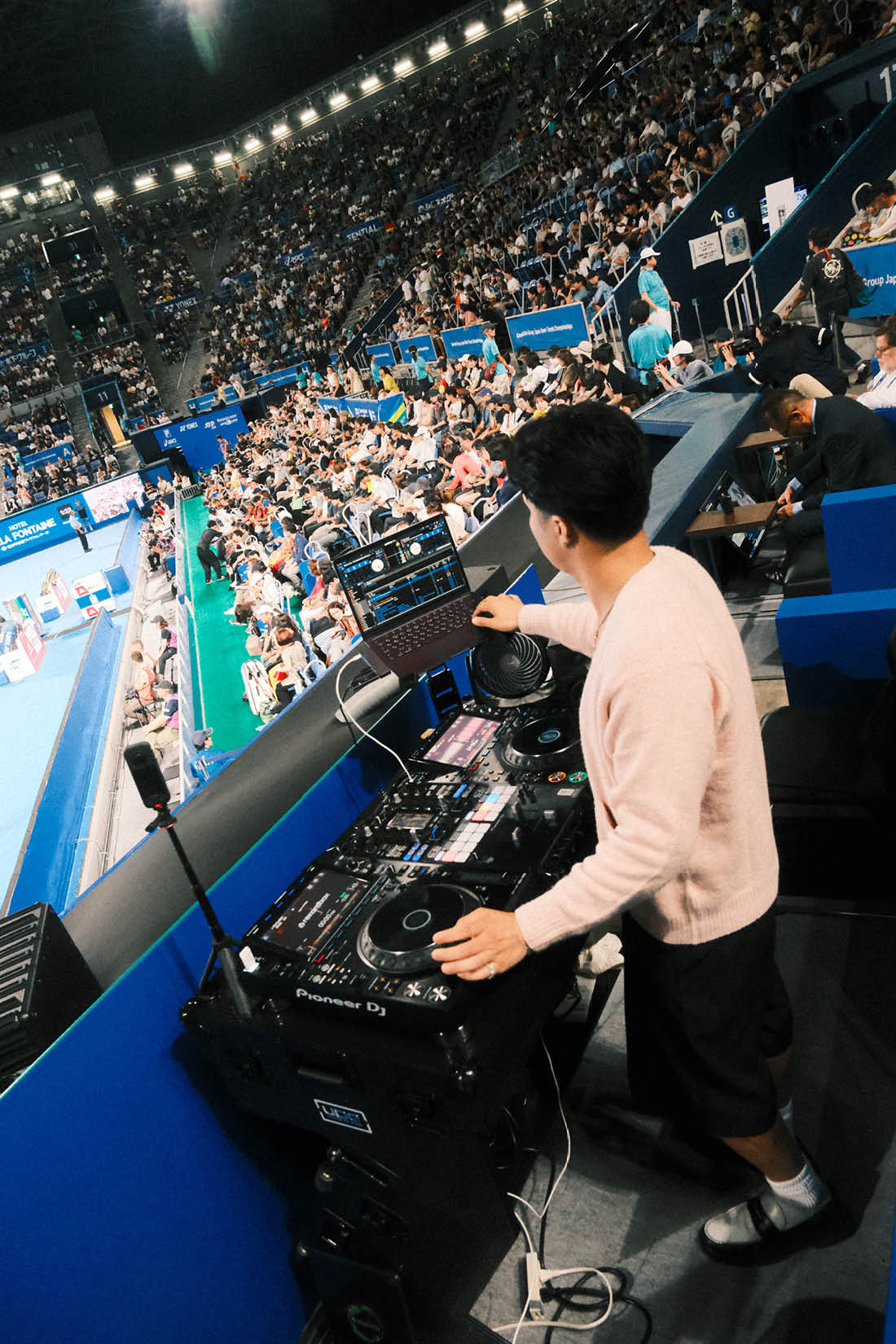



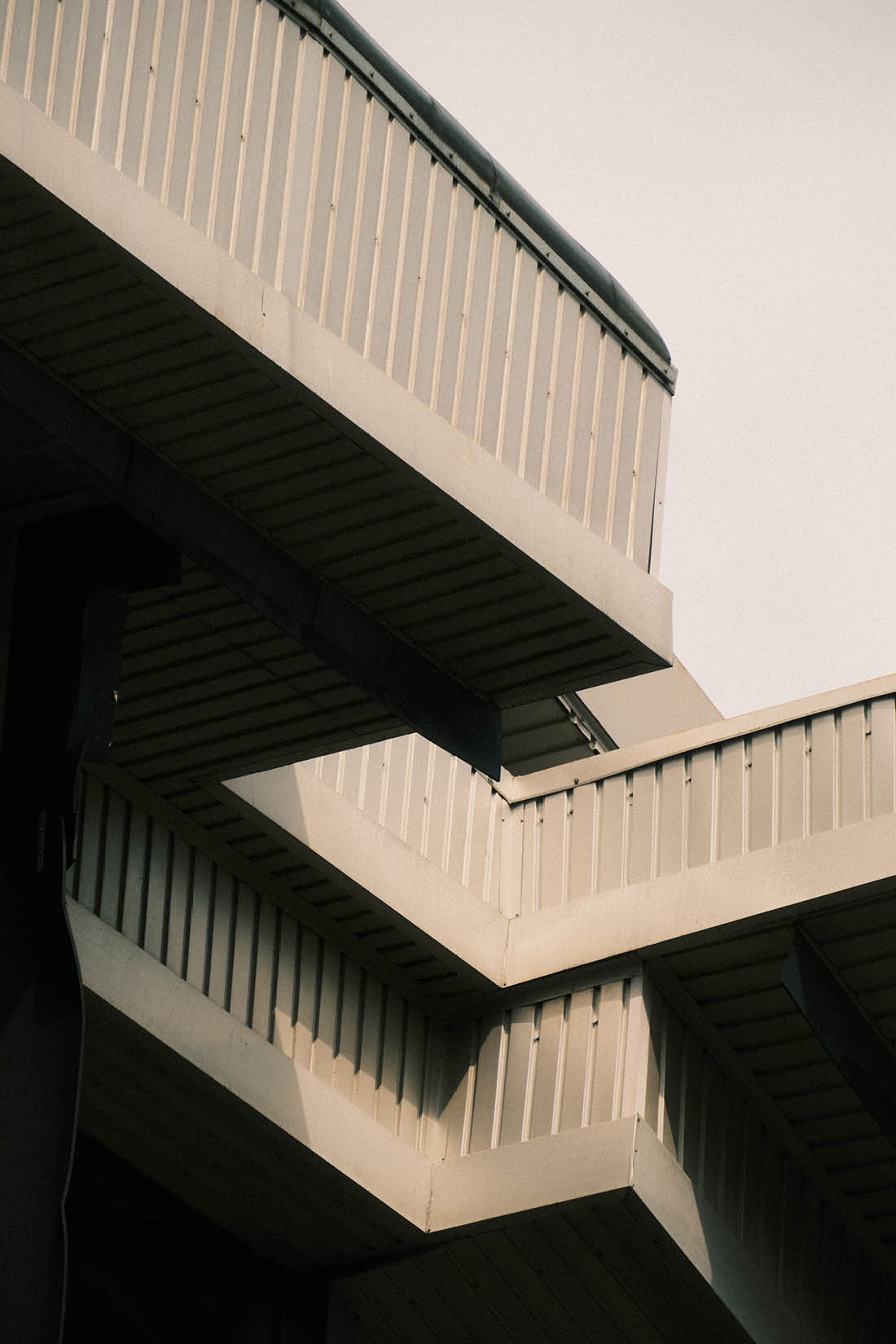


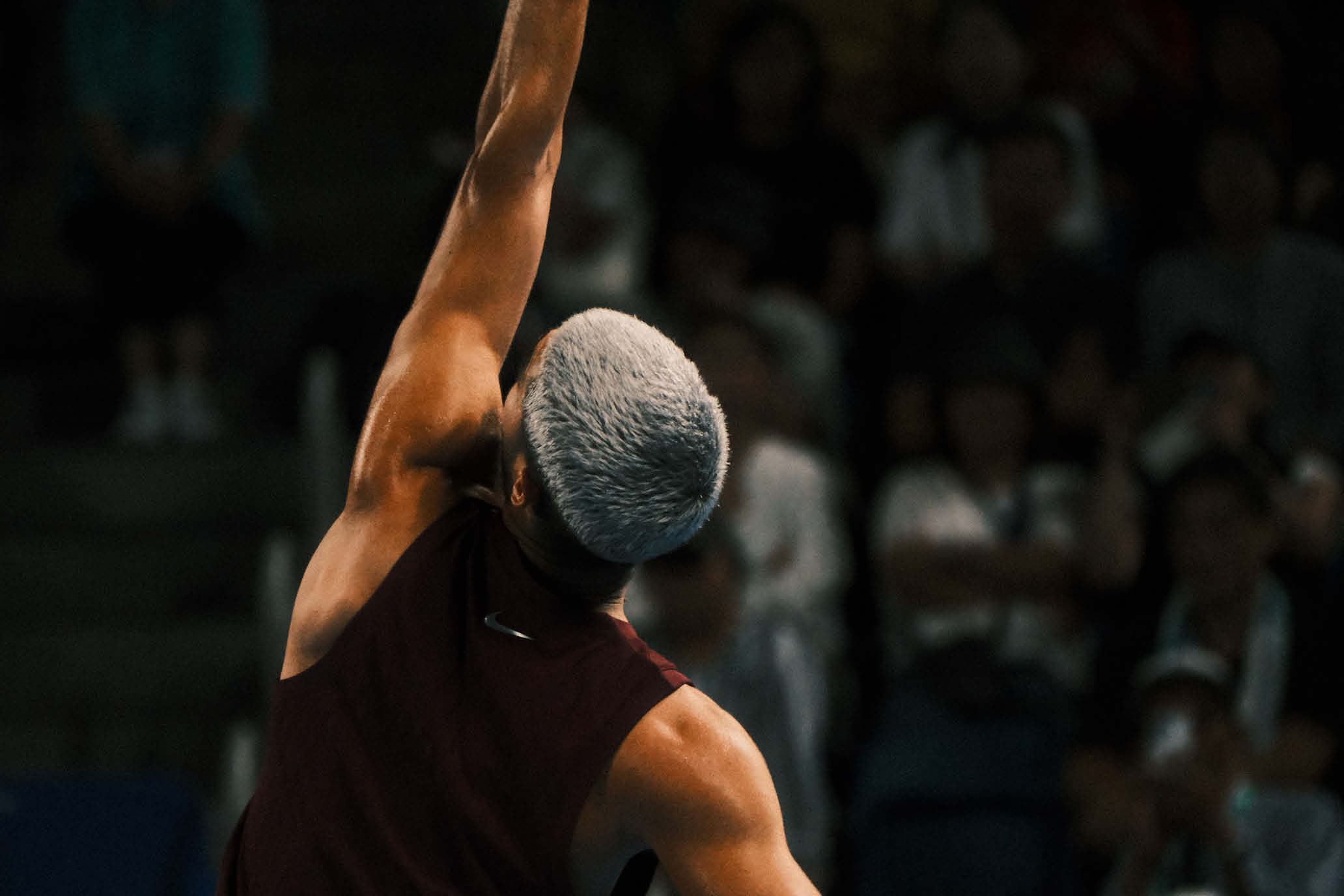

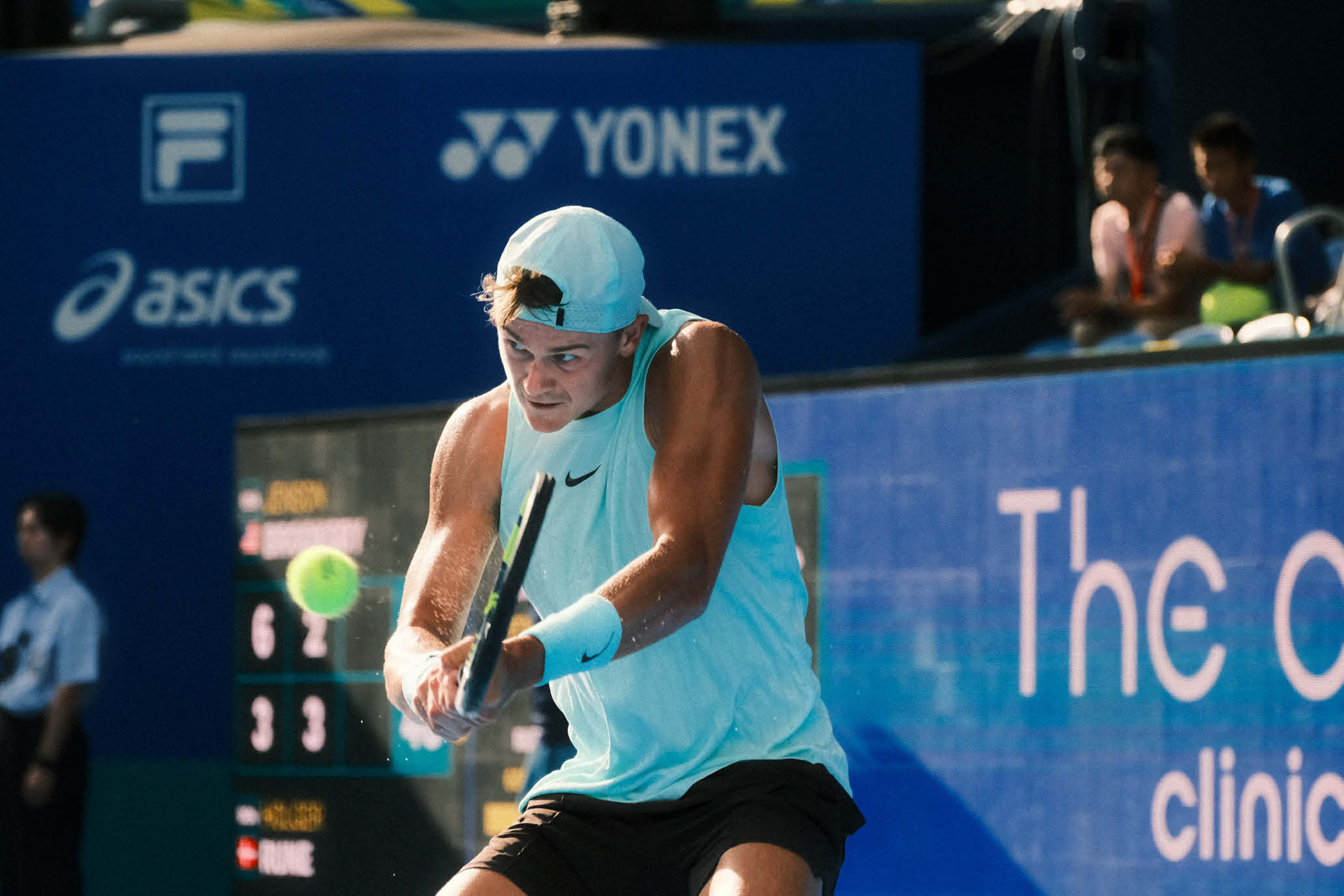



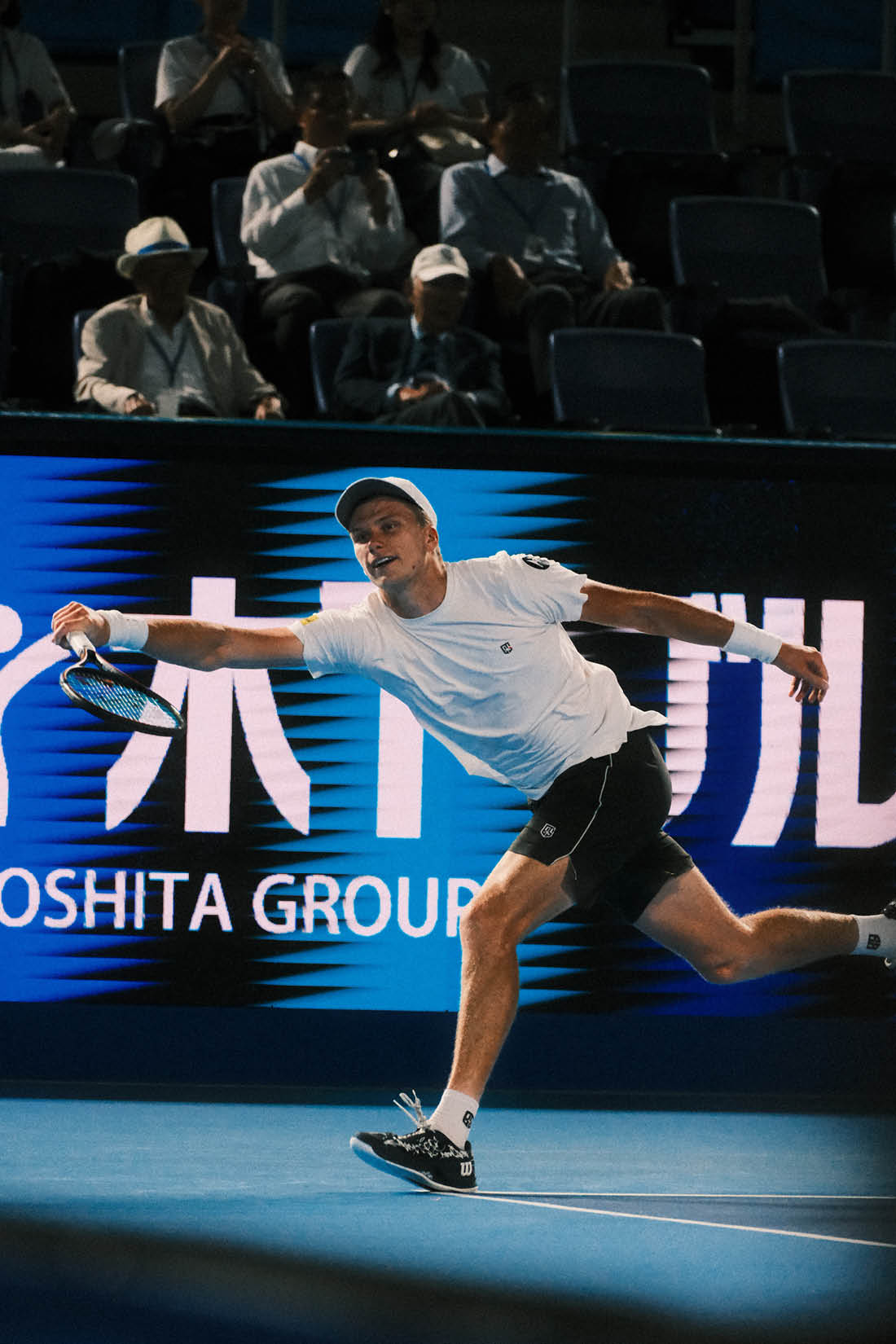
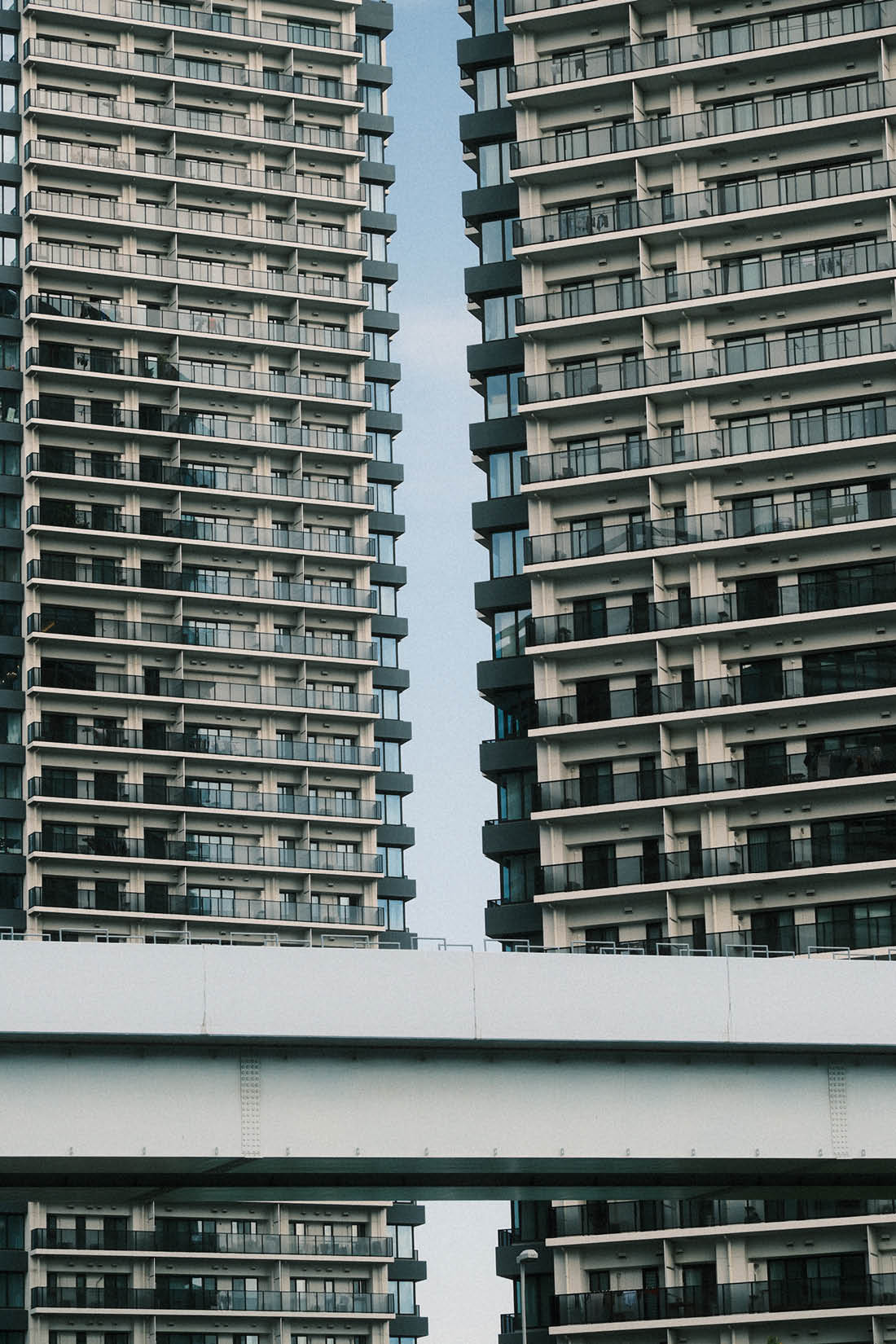







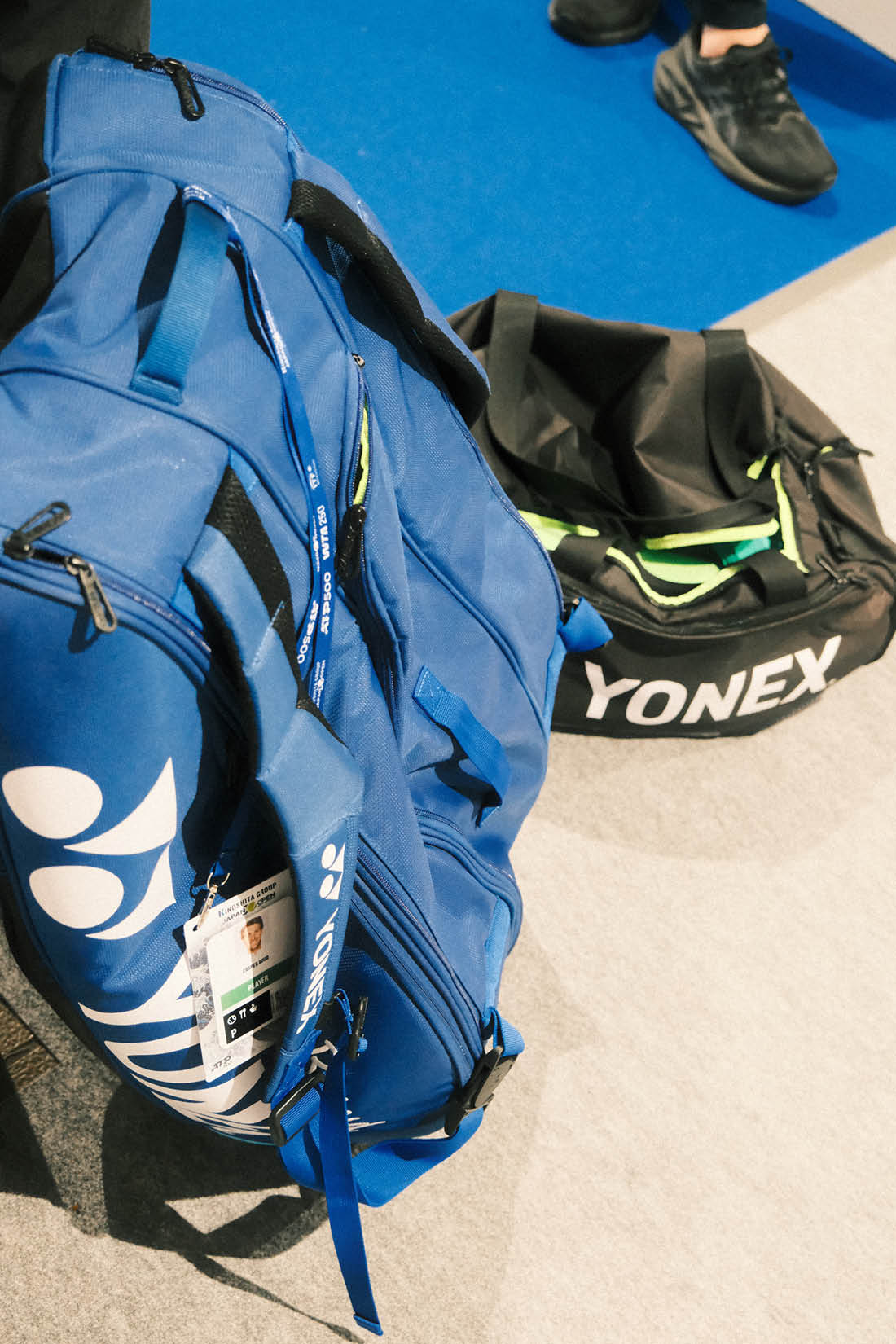



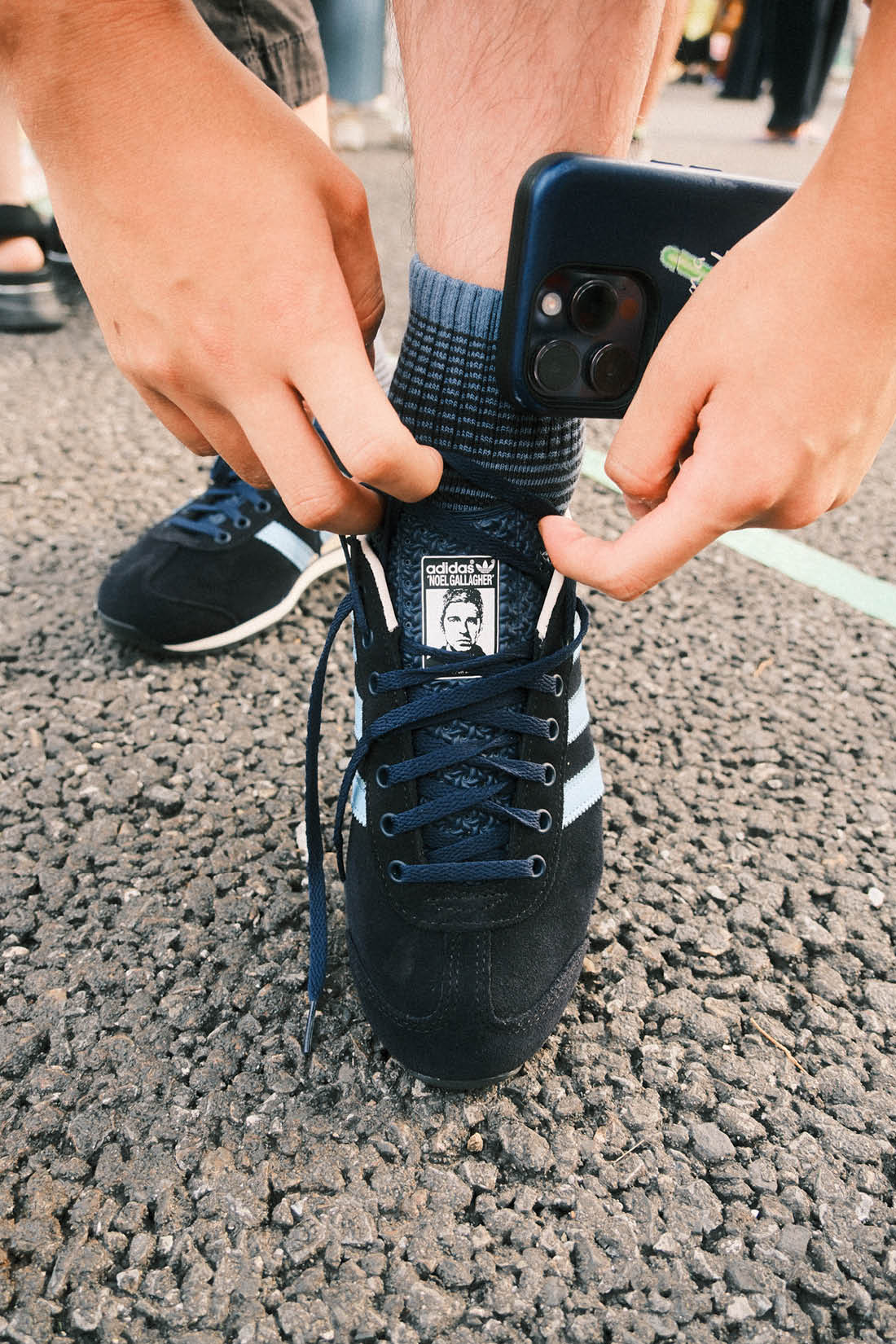


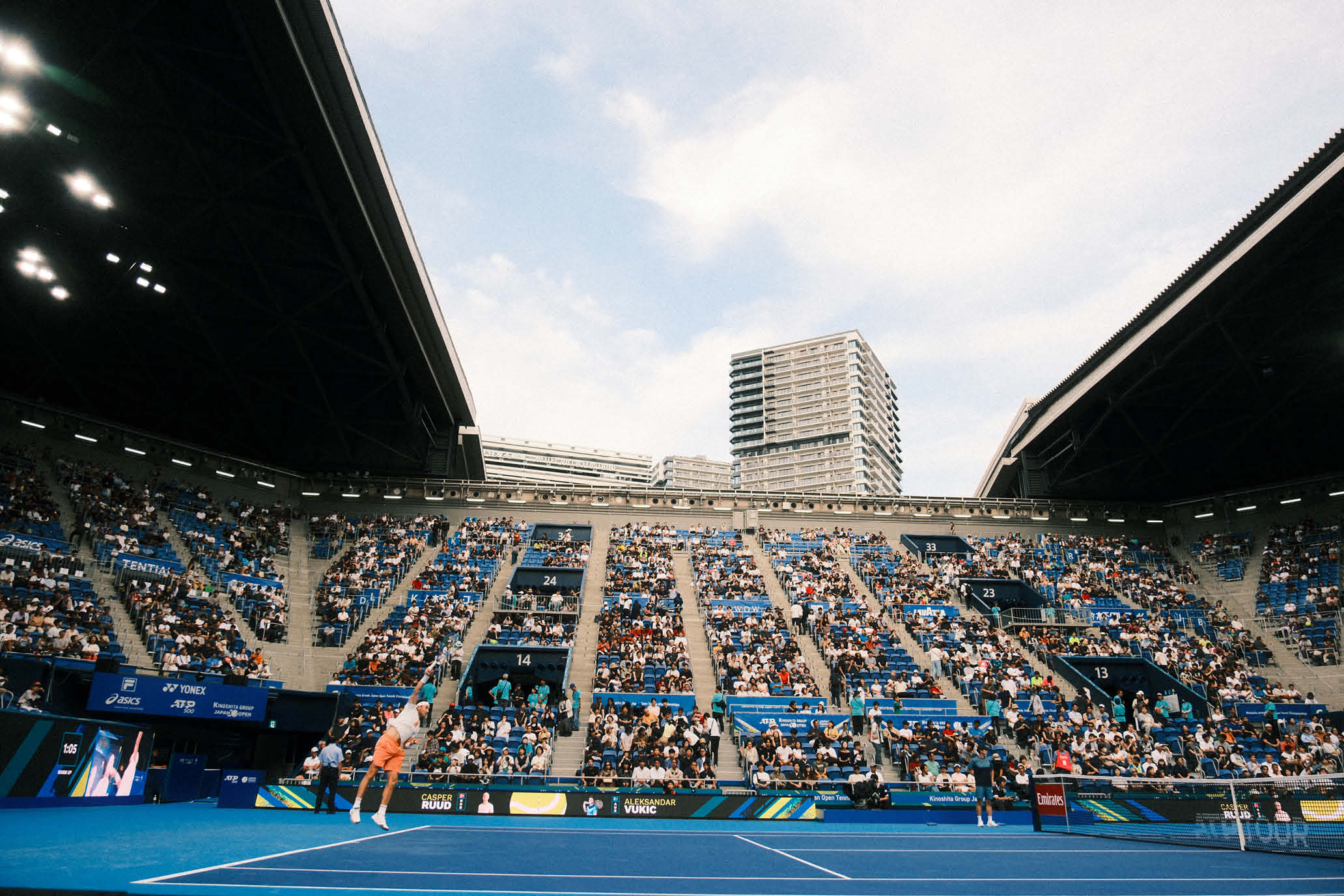

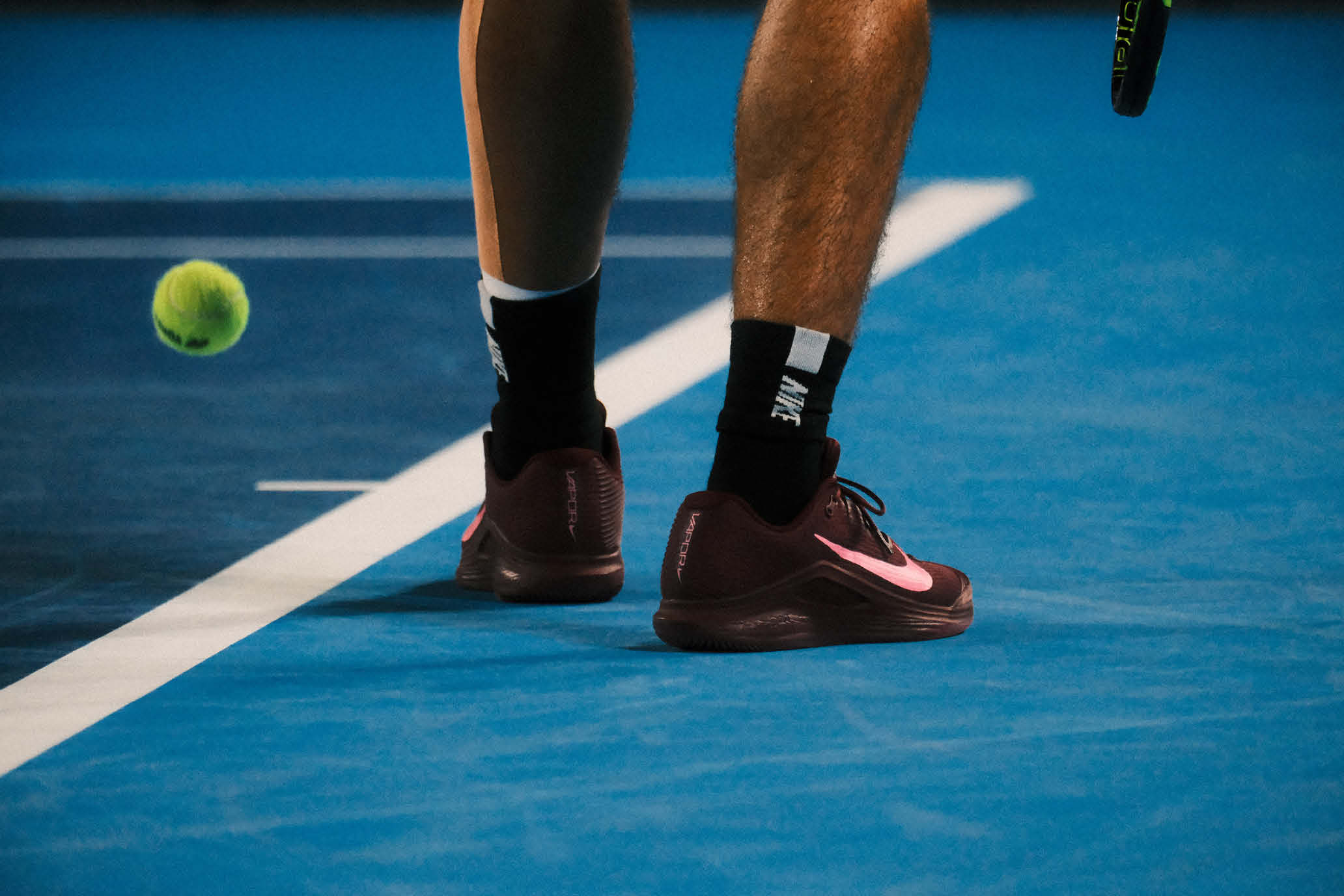

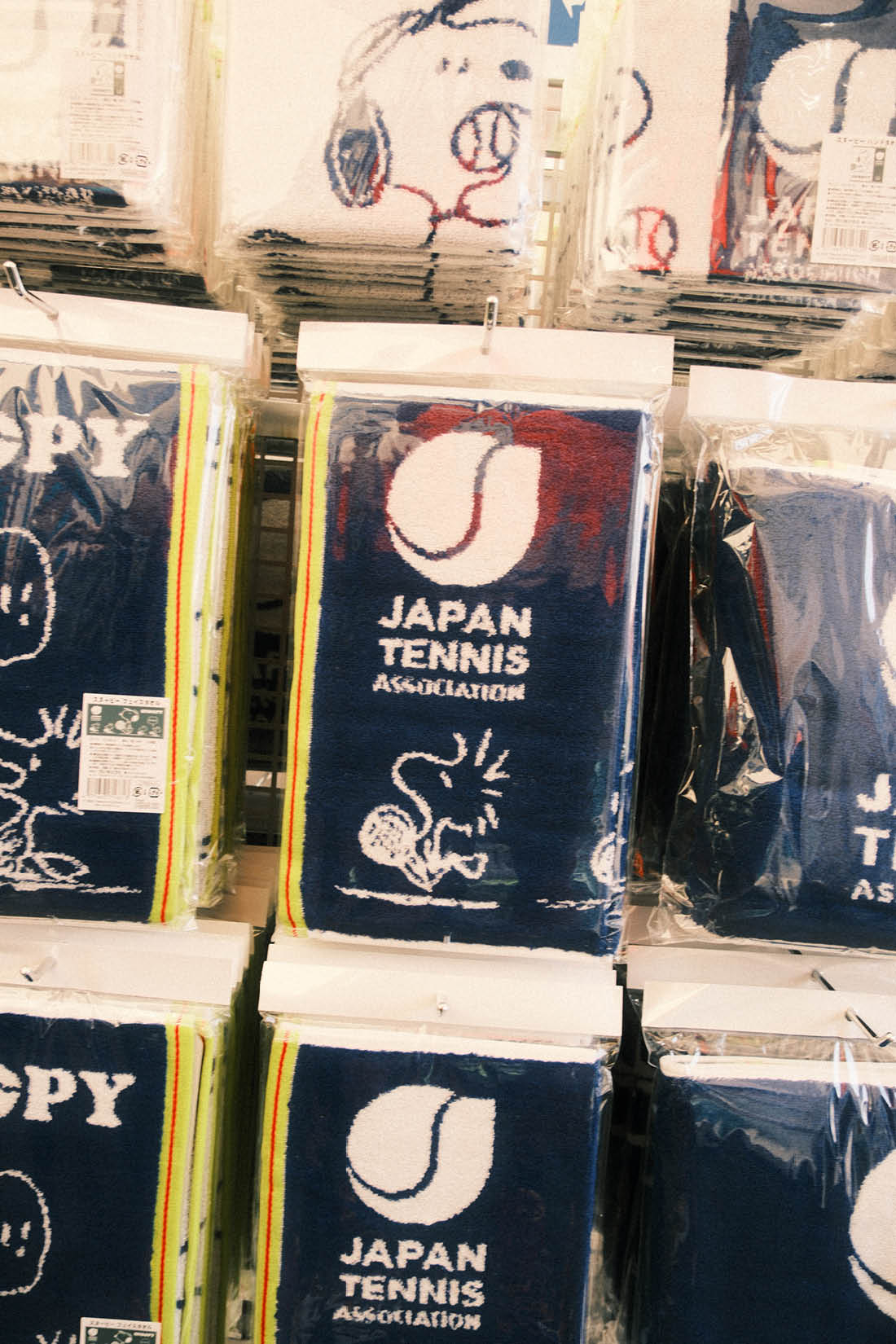



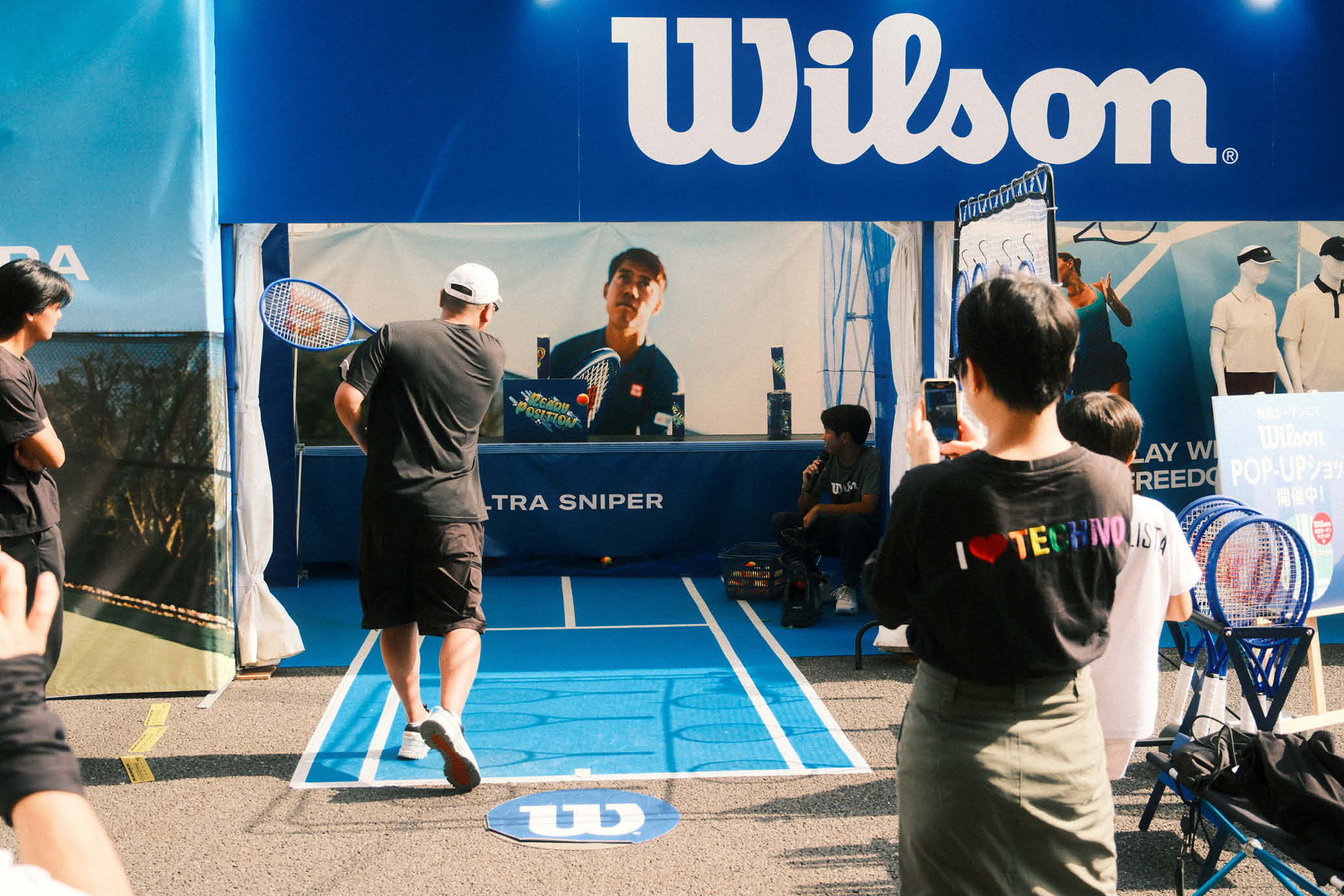

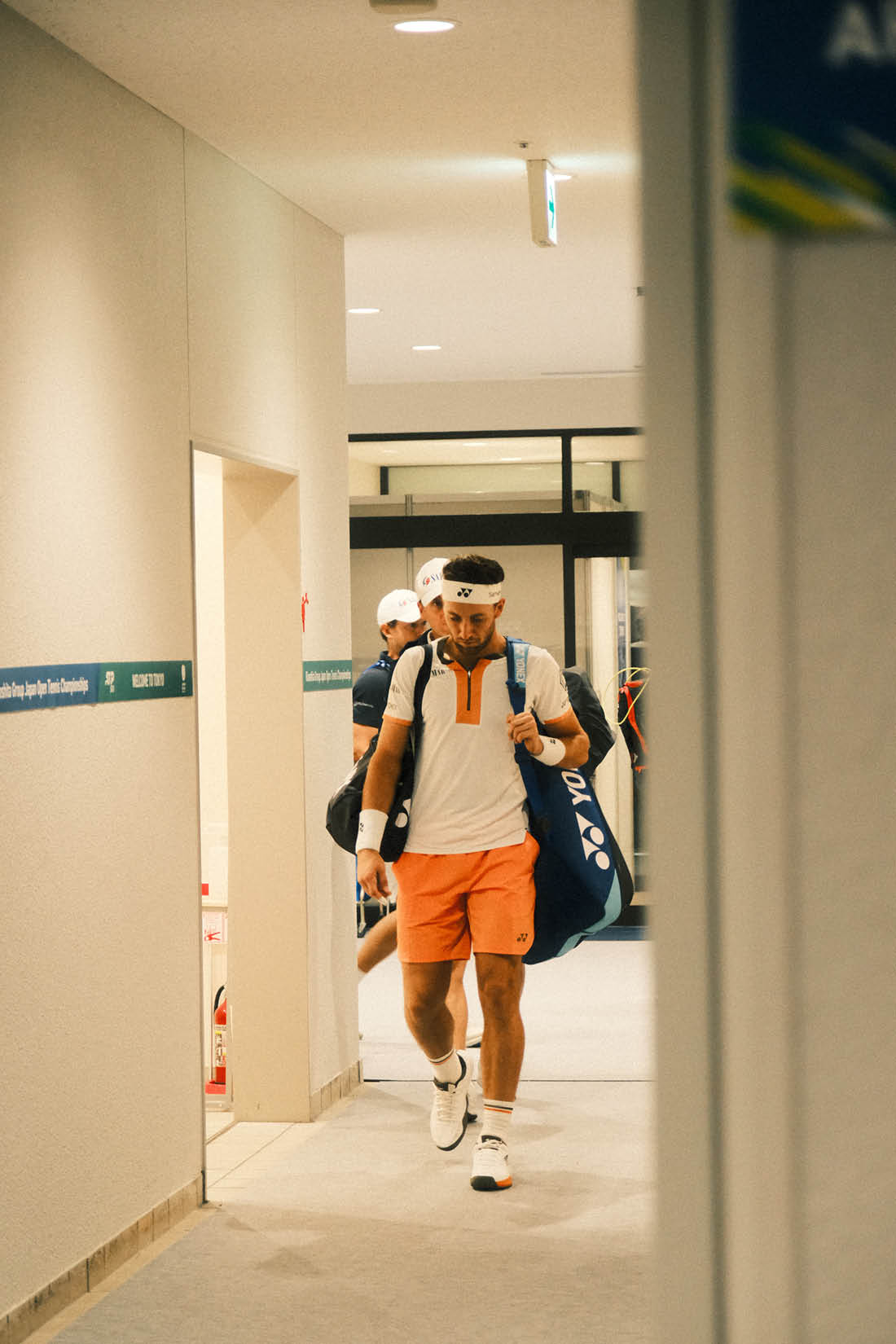
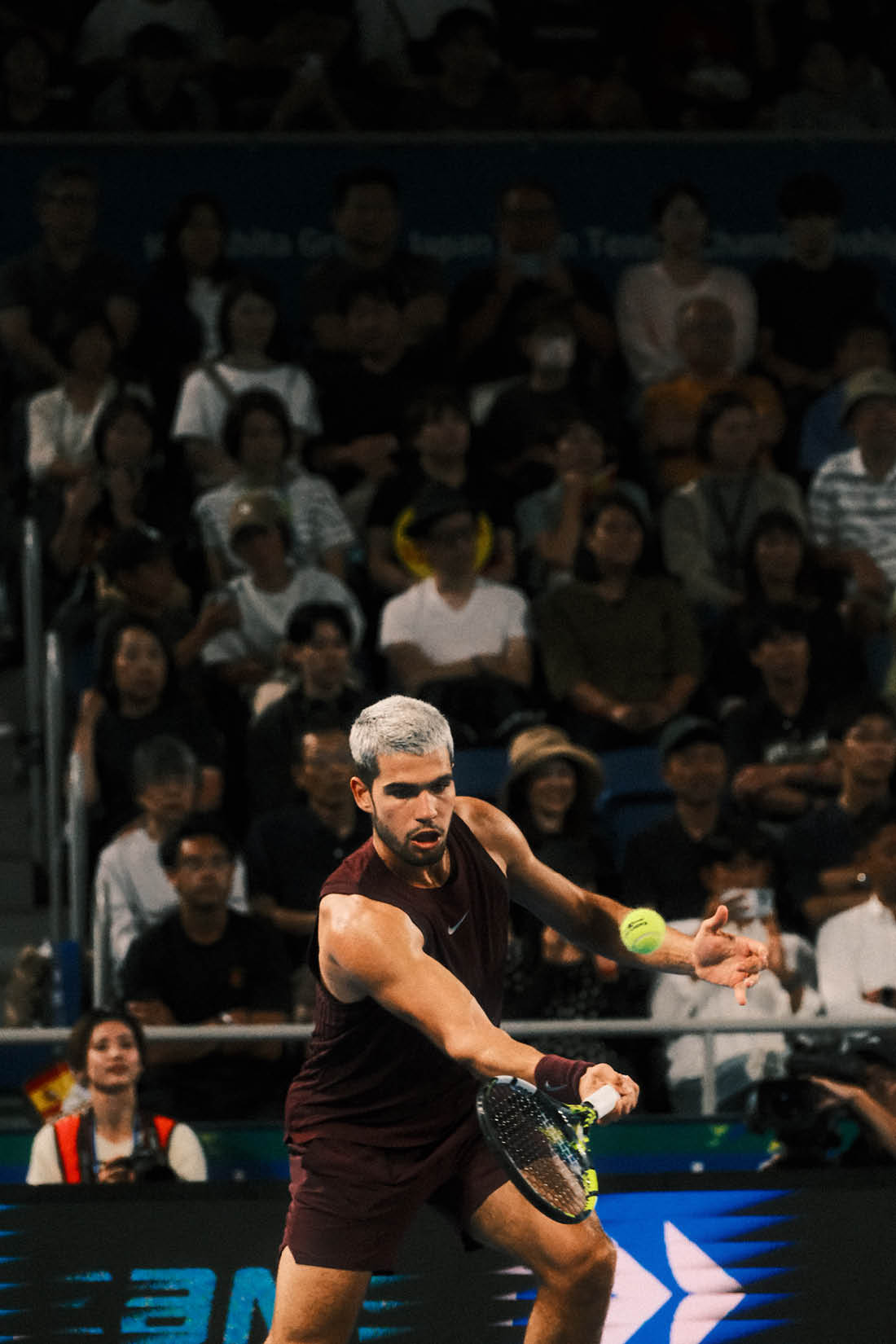




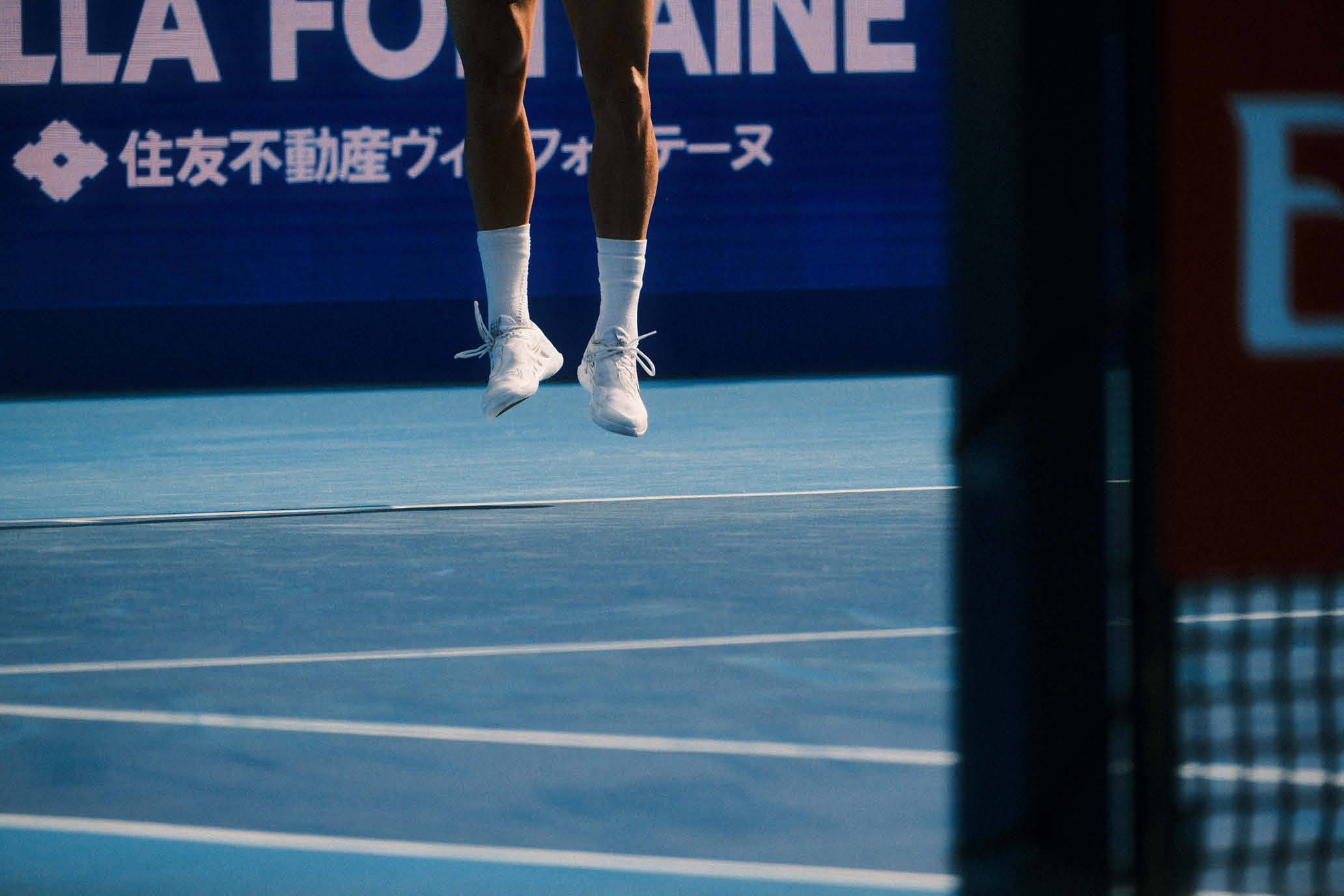





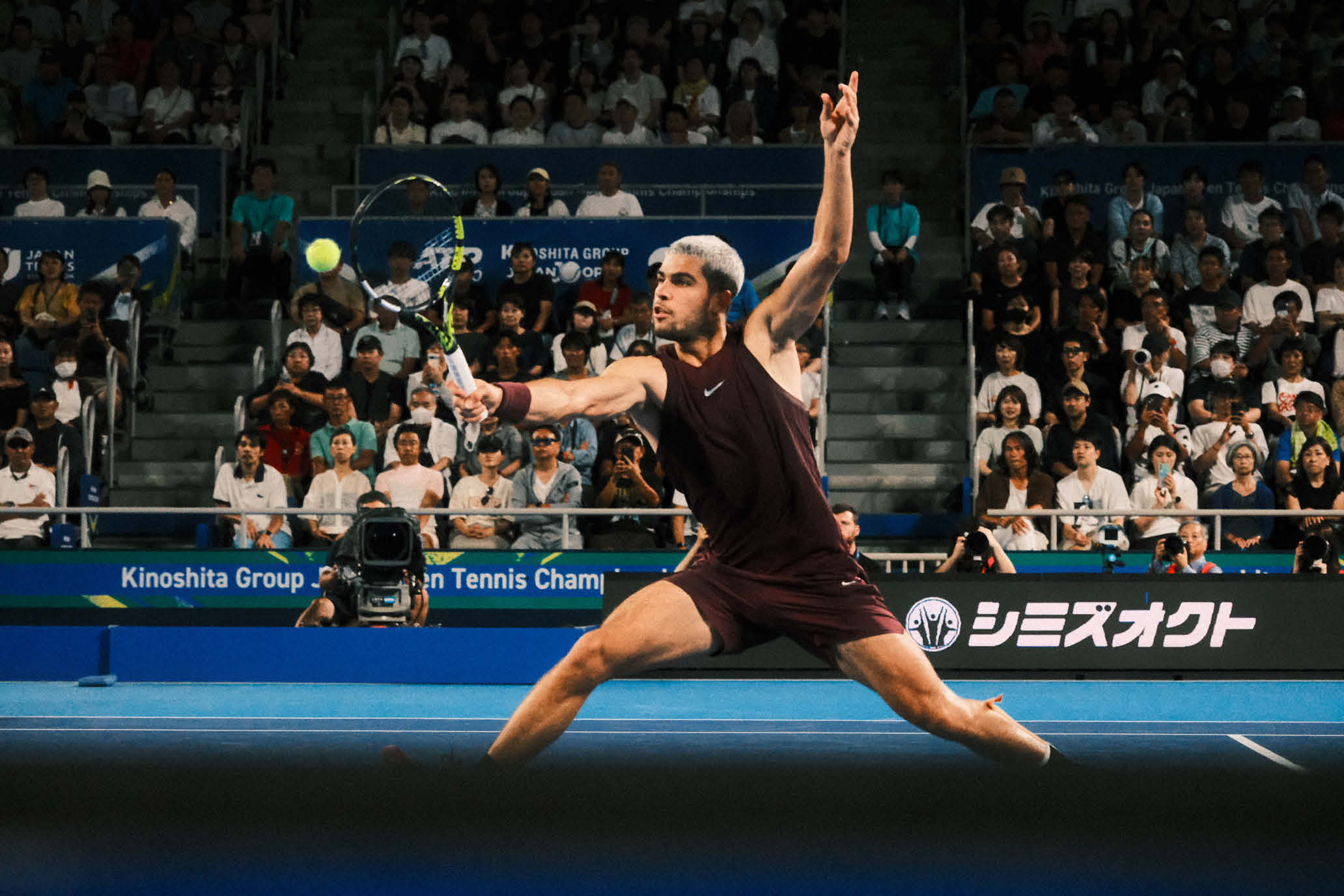

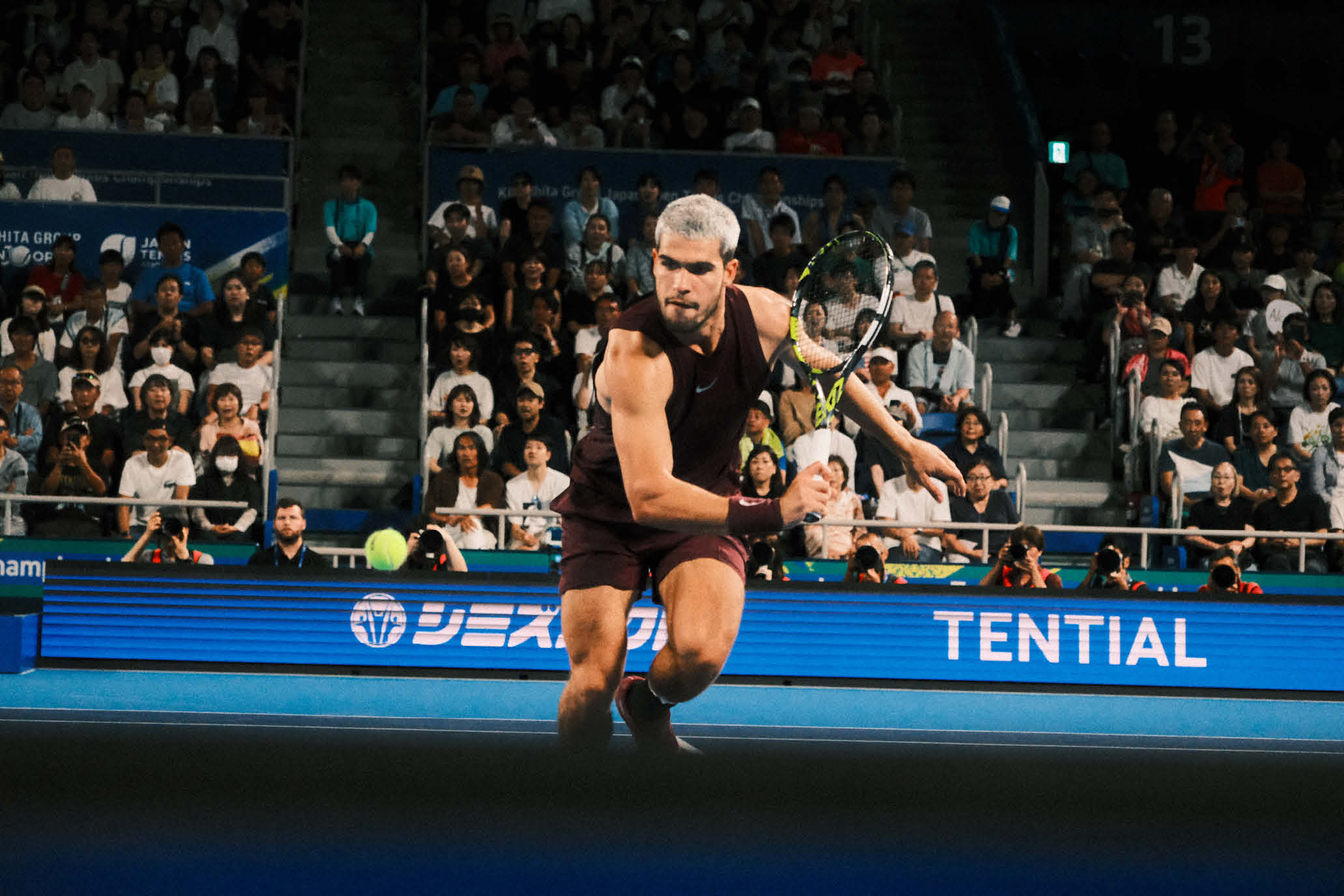



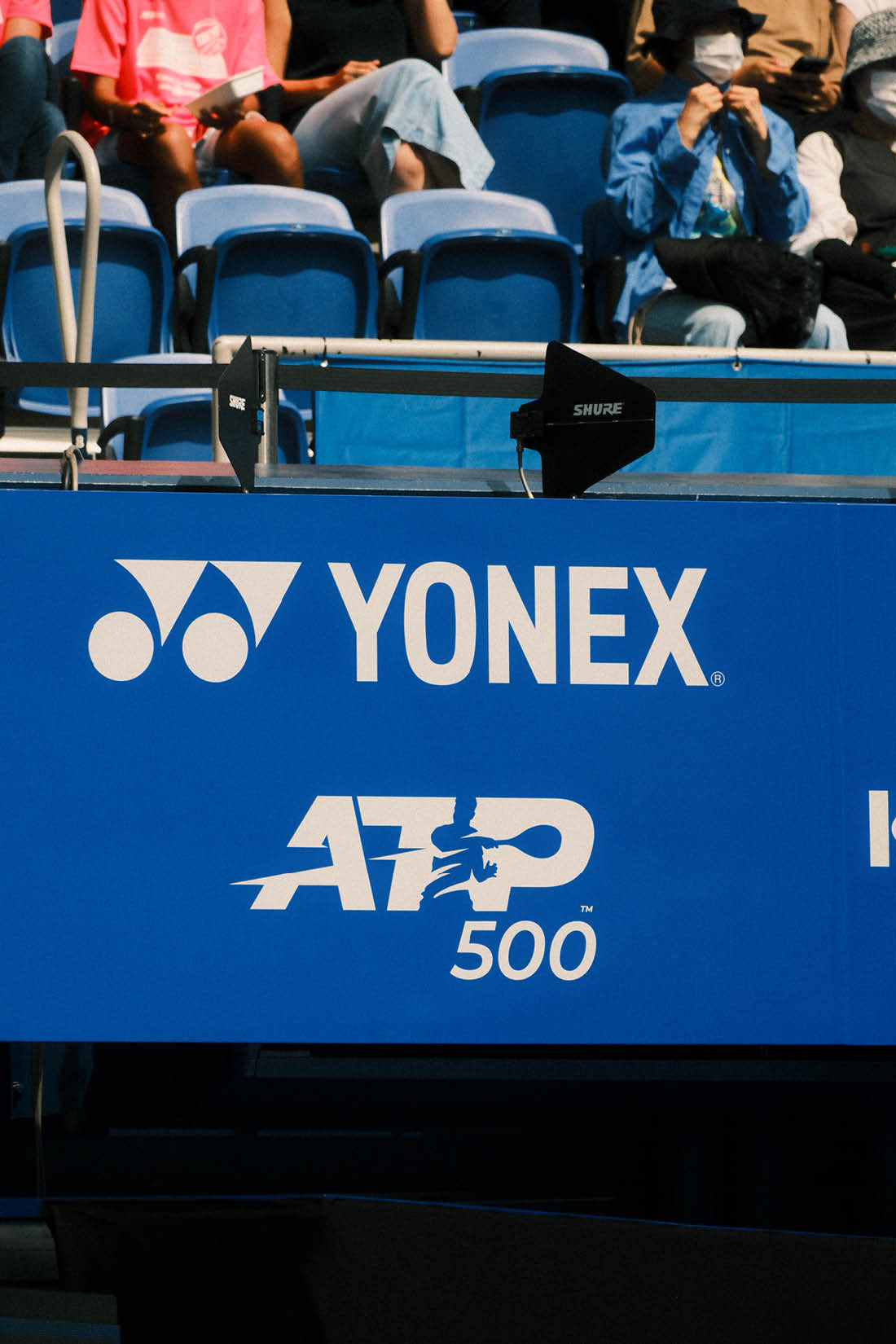
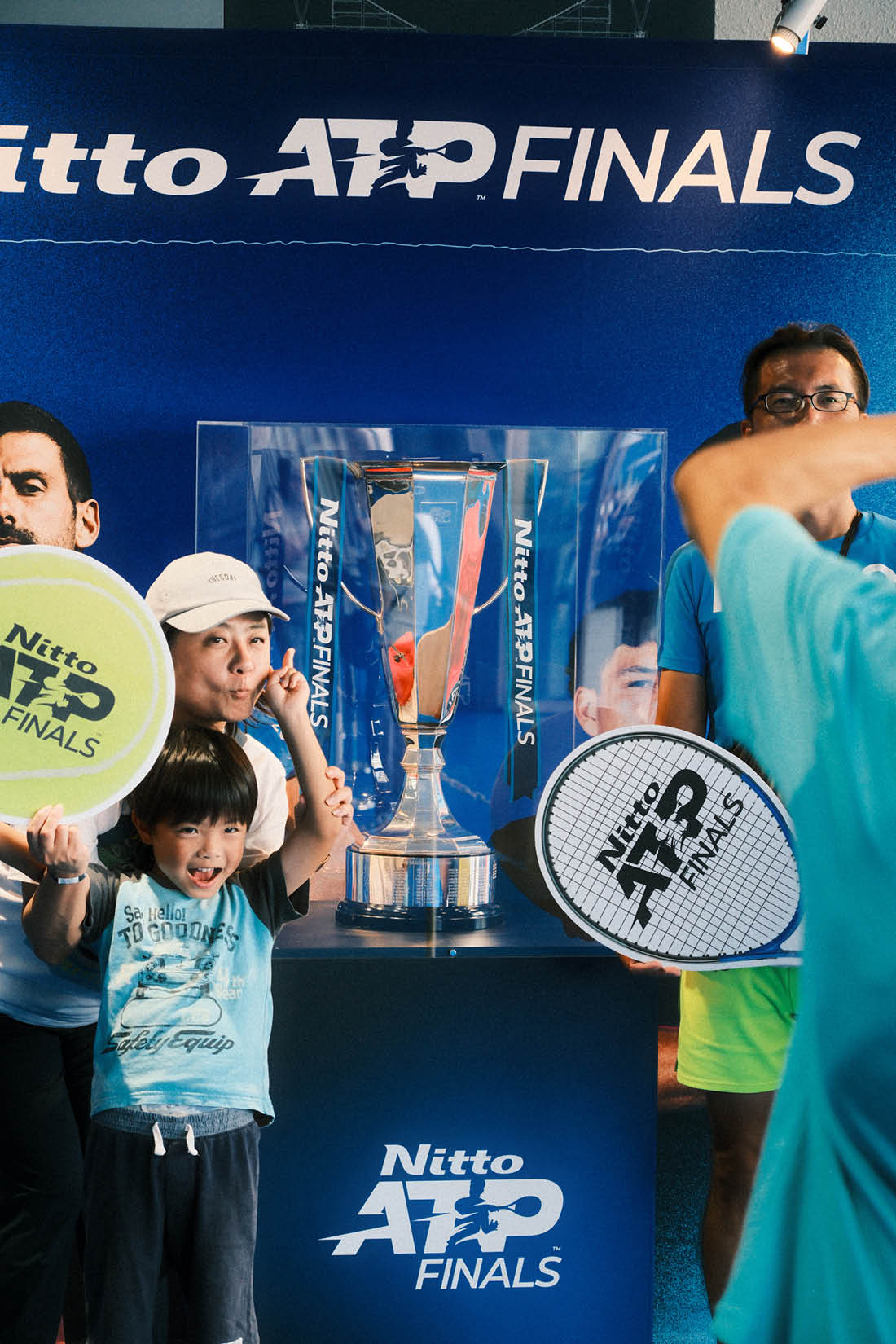


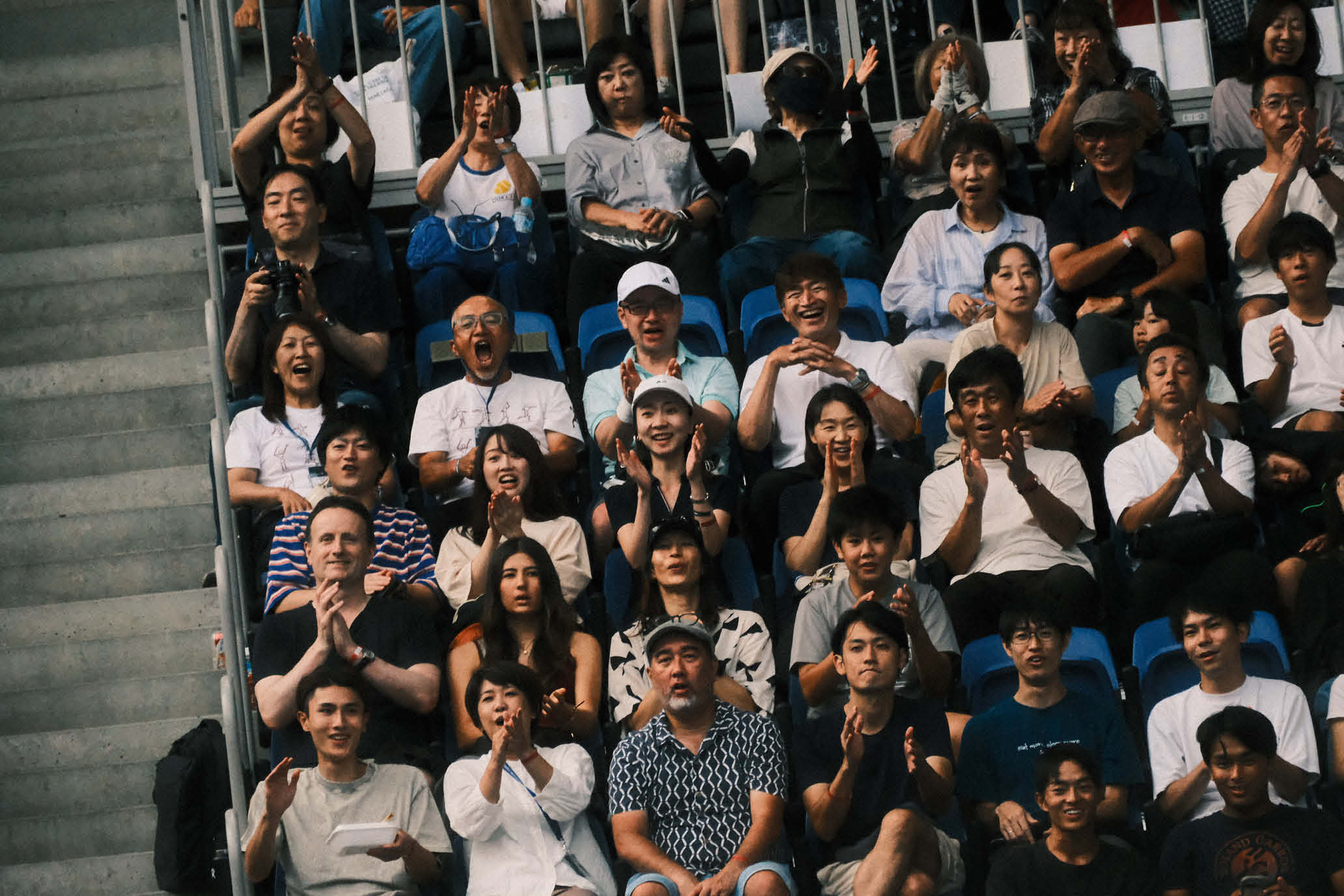

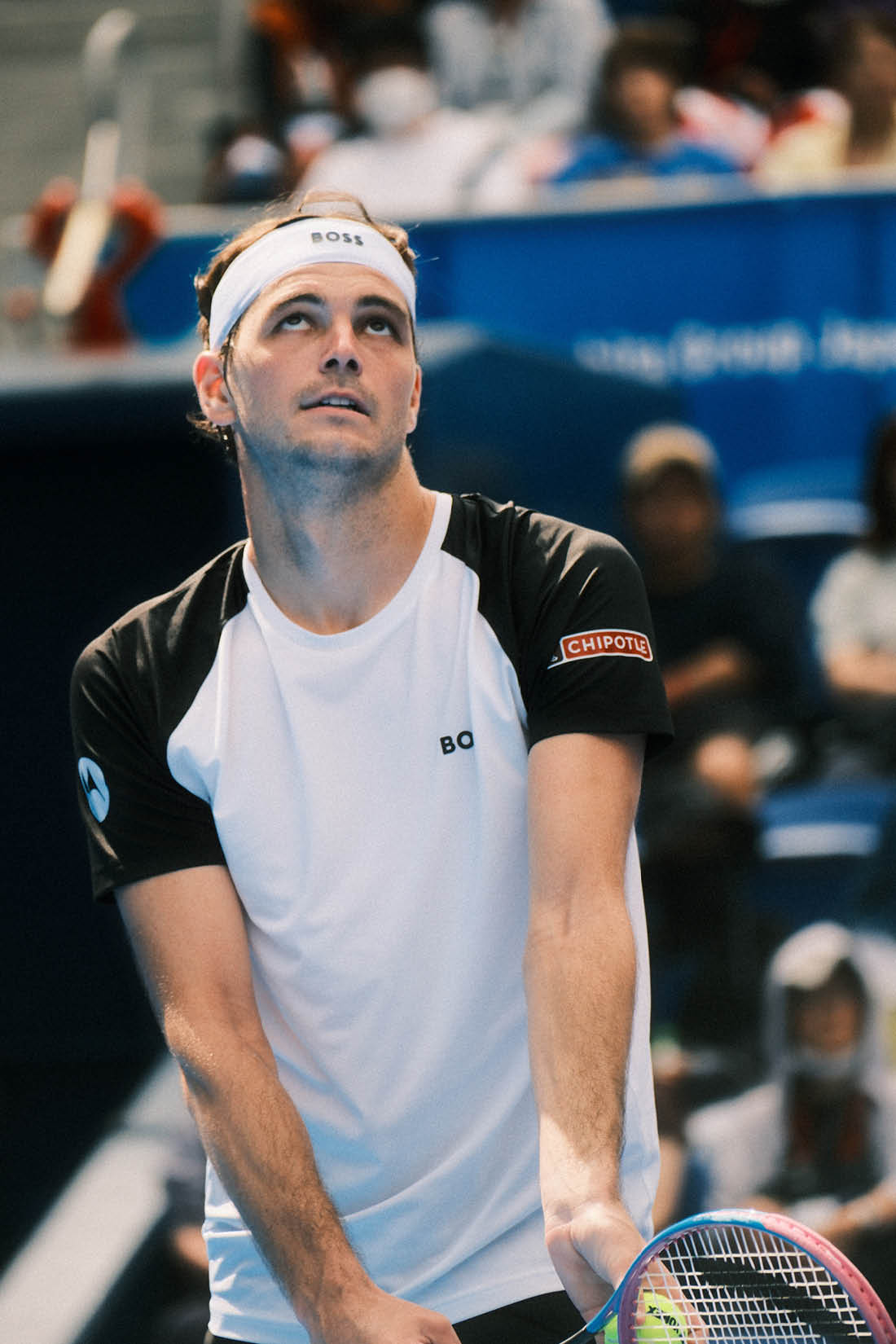
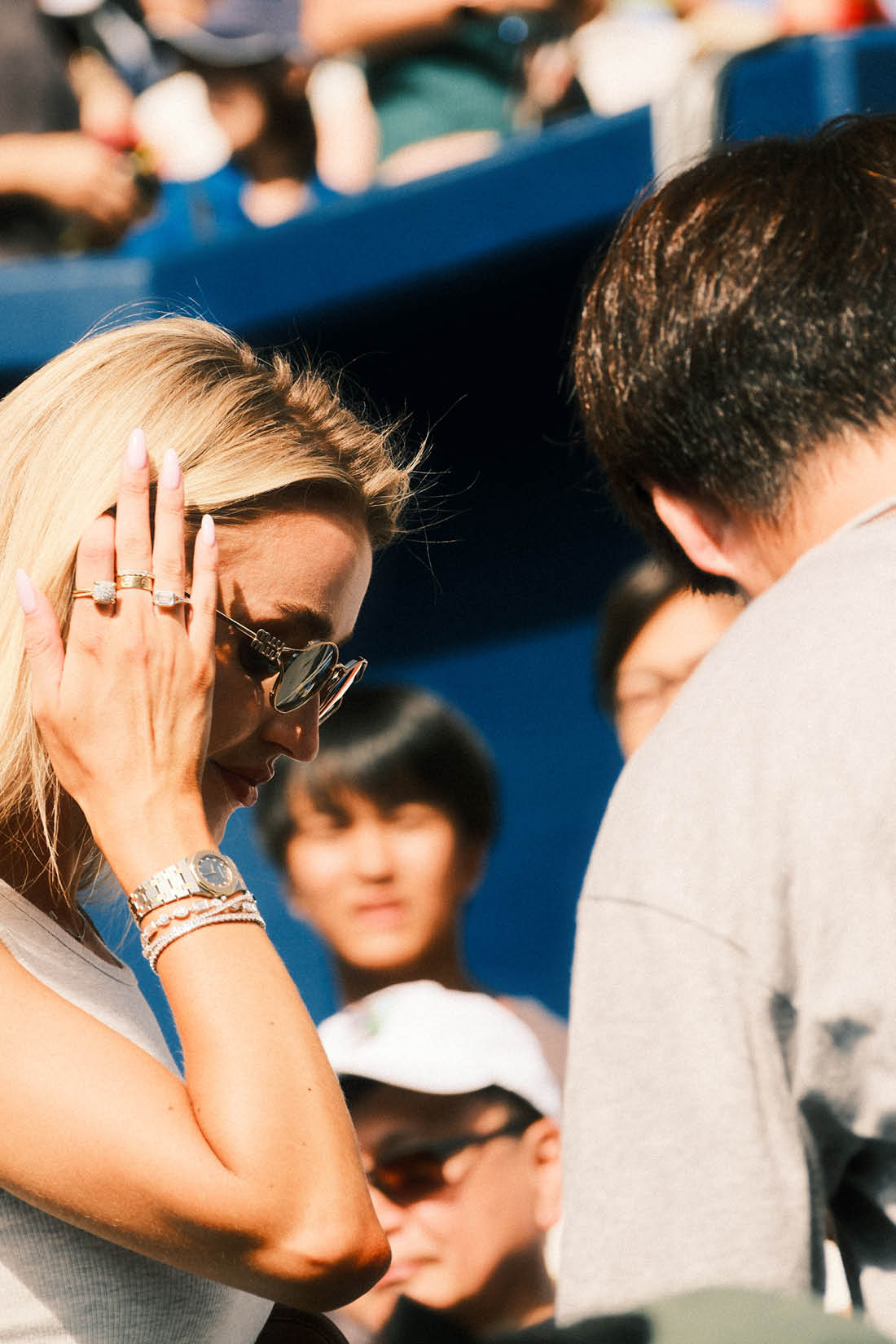



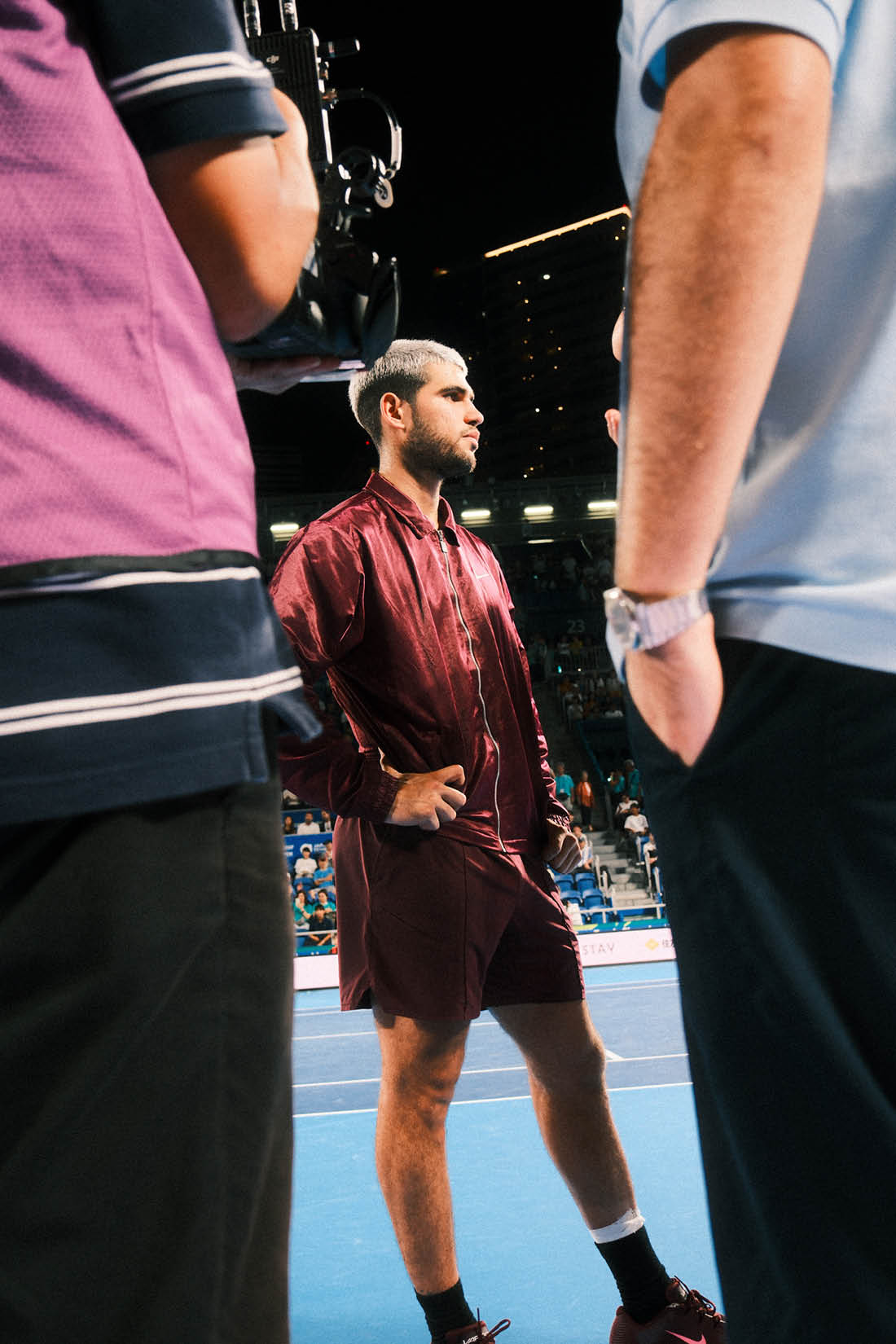









SIGN UP — YOU'RE ONLY AS GOOD AS YOUR SECOND SERVE.
Finish Line
Finish Line
Finish Line
Jannik Sinner and Carlos Alcaraz vie for the year-end ranking of No. 1 in the world.
Jannik Sinner and Carlos Alcaraz vie for the year-end ranking of No. 1 in the world.
By Simon Cambers
September 23, 2025

Jannik Sinner celebrates a victory, and a year-end No. 1 ranking inTurin last year. // Getty
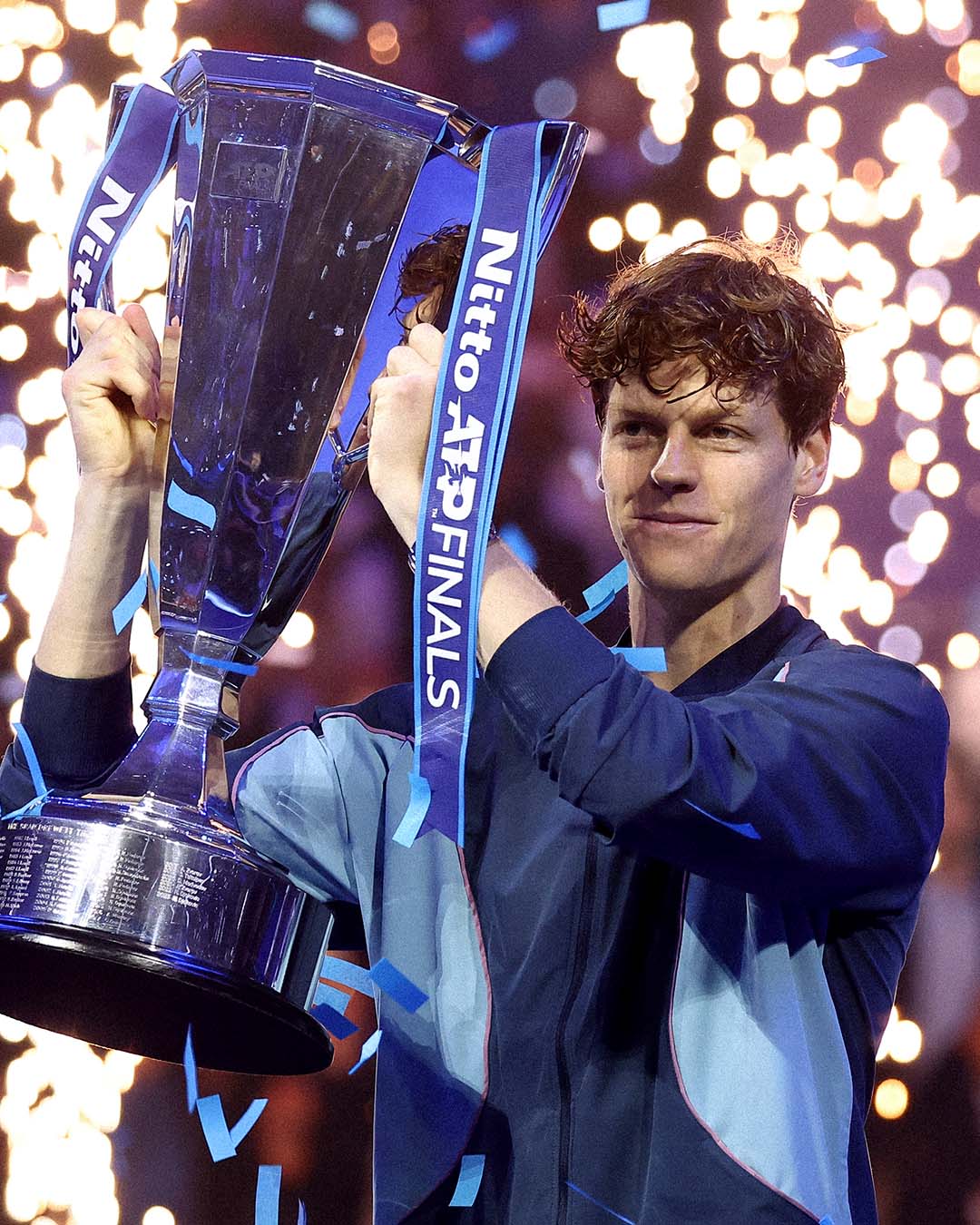
Jannik Sinner celebrates a victory, and a year-end No. 1 ranking inTurin last year. // Getty
Roger Federer used to begin every year with two main goals: to win his beloved Wimbledon and to finish the year ranked world No 1. Lofty goals for most, realistic aims for a man who ended up winning Wimbledon eight times, second only to Martina Navratilova, and who topped the year-end rankings five times.
Until the establishment of the ATP rankings in August 1973, the world rankings were an informal affair, decided by national associations, Tours, and—it hardly seems possible to imagine now—a small group of revered journalists. Not the most objective of arrangements.
While the old system was a constant source of argument, the new rankings held immediate credibility and prestige, providing players with a new goal that really meant something. Finishing the year ranked No. 1 was indisputable proof of who was the best player of that year. Ilie Nastase was the first man to earn the honor, in 1973, and only 18 other men have ever managed it, an elite band.
The race to end the year on top has seen many players make superhuman efforts, crisscrossing the world in the chase, knowing that their place in history would be assured if they could be No. 1 when the year ended. Take Pete Sampras. The American finished as world No. 1 for six straight years in the 1990s, an all the more remarkable statistic when you remember that he picked up very few points on clay. In 1998, he was so desperate to finish No. 1 for the sixth year in a row that he played six events between the U.S. Open and the season-ending ATP World Championships, as it was called then, edging out Marcelo Rios, the talented Chilean, to stay top dog.
“To get to No. 1 is one thing; but to stay there is another thing,” Sampras said at the time, having clinched the year-end ranking at the ATP World Championships in Hanover when Rios, exhausted and injured, pulled out before his first match. “It’s twice as hard. To have stayed on top for most of my career is a little overwhelming. You see many players in the past have not handled the pressure or not enjoyed it. I’m very comfortable being No. 1, and that helps.”
Novak Djokovic holds the record for the most years at No. 1 overall, with eight, but no one has come close to matching Sampras’ run of six on the bounce. I remember how physically and emotionally tired he was when he first chatted to the media in Hanover in 1998—the first time I covered the season-ending event myself—but the effort was worth it as he set a record that he feels may never be broken.
Andy Murray followed Sampras’ example when he ended the year ranked No. 1—for the first and only time—in 2016, winning five titles in a row to pip Djokovic for the honor, sealing the deal when he beat him in the final. Murray’s hip gave out midway through the following year, but even now he will say that finishing No. 1 meant everything. John McEnroe, who managed it four times, always said it was validation of a whole year’s results, showing, without doubt, who was the best.
In this era of instant gratification, it’s somehow reassuring that today’s top players also see ending the year at No. 1 as something worth the effort. Carlos Alcaraz’s victory over Jannik Sinner in the U.S. Open final gave him a commanding lead over the Italian going into the Asian swing of events, but there is still some work to be done if he is to become just the 11th man to finish a year at No. 1 more than once, having done so for the first time in 2022, after his breakthrough Slam win in New York.
It would be no surprise, though, should Sinner end the season on a charge. The fact that the ATP Finals are again held on home soil in Turin this year is an obvious incentive for him to finish the year strong, and the 24-year-old, who took his Grand Slam tally to four in 2025 thanks to wins in Melbourne and at Wimbledon, remembers the “special feeling” he experienced when finishing No. 1 for the first time at the end of 2024.
Providing Alcaraz stays healthy, it will take a herculean effort for Sinner to overhaul the almost 2,600-point lead the Spaniard had in the ATP Race—the calendar-year standings—going into this week’s events (Sinner is in Beijing, while Alcaraz is in Tokyo).
But Sinner showed last year just how good he is indoors, winning in Shanghai and then going unbeaten as he won the ATP Finals in Turin, picking up a combined 2,500 points in the process. Alcaraz won in Beijing last year—beating Sinner in the final—but if the Italian can cut the lead by winning again in Shanghai the following week, then anything’s possible.
Neither man is currently scheduled to play between then and the last Masters 1000 event of the year, the Rolex Paris Masters at the end of October, although even that could change if one or the other man feels he needs to add an event to chase more points.
Both players won two Slams apiece in 2025, and both are clearly showing signs of fatigue, but the lure of year-end No. 1 keeps them going. What happens in the Asian swing is likely to decide who ends up on top.

PURE, ORIGINAL TENNIS — SIGN UP!
September Song
September Song
September Song
The Laver Cup is about as entertaining as tennis can get in post-US Open.
The Laver Cup is about as entertaining as tennis can get in post-US Open.
By Giri Nathan
September 23, 2025
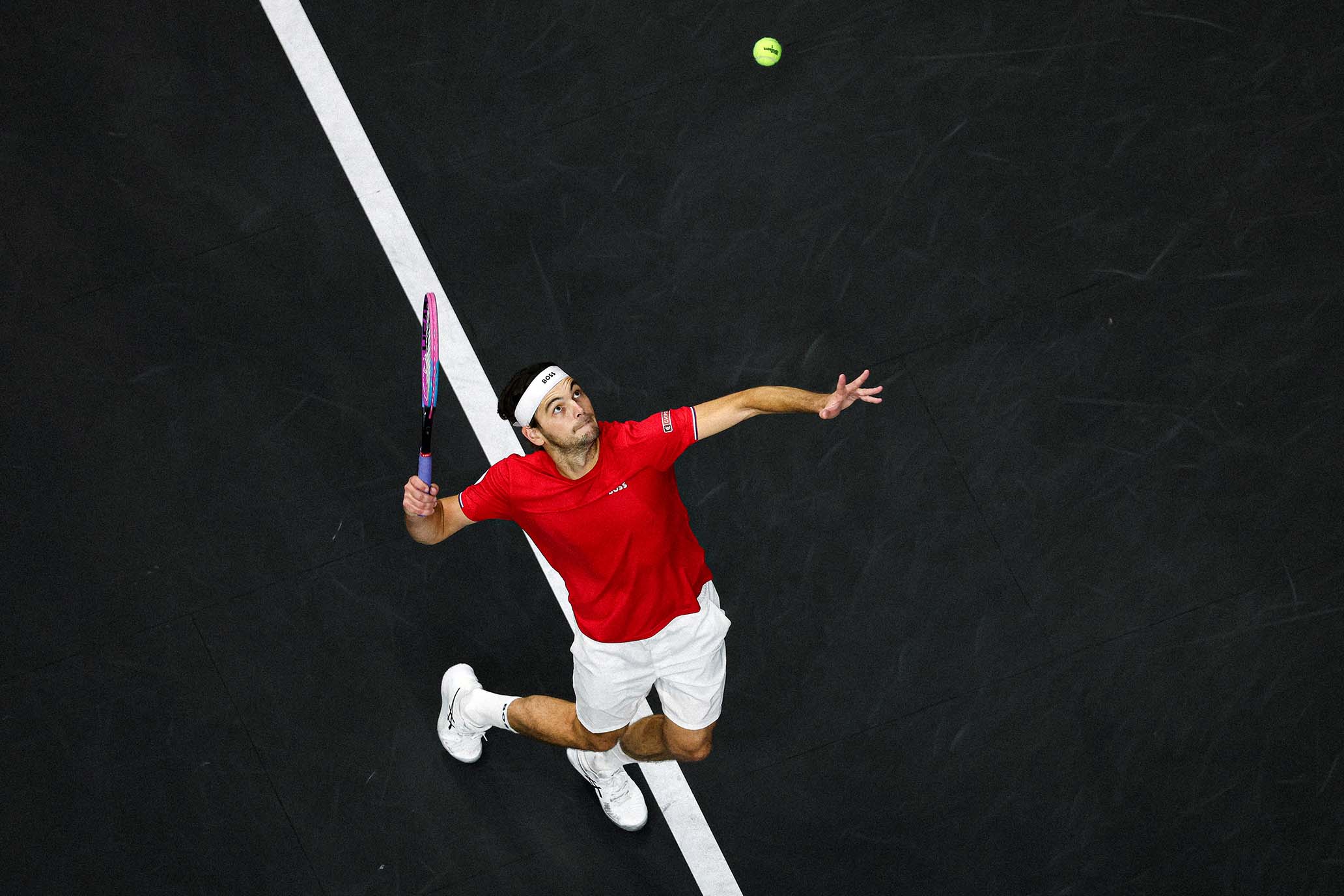
Taylor Fritz had perhaps the best weekend on the gray, slow hard court at the Laver Cup in San Francisco. // Getty

Taylor Fritz had perhaps the best weekend on the gray, slow hard court at the Laver Cup in San Francisco. // Getty
The Laver Cup wrapped up its eighth iteration. I think I can conclusively admit that they’ve hit on something good. Even the first iteration in 2017, which had some of the bluster and silliness of pro wrestling, was already entertaining to me. Then in 2022, Roger Federer chose to retire at the Laver Cup—because his management company co-owns it—burning a classic afterimage on that gray court. Now I’m so bought that, even though I often forget this event exists, I always lock in when it does reappear on my TV. After the long days of the U.S. Open I often don’t want to look at a tennis ball for weeks; these matches won me back. It’s about as entertaining as tennis can get in late September.
A reason for all that is that the players are actually trying. Is the Laver Cup an exhibition? It has the official stamp of the ATP, but that isn’t everything. Over at Bounces, Ben Rothenberg has written up a satisfyingly thorough breakdown of tennis exhibitions, applying lots of different criteria. In my own head, I think I had been operating under a softer standard: Do the results of the tournament tell you anything of enduring value about the players, and the careers going forward? Some exhibitions are played at about 30 percent effort, and the run of the match is worked out ahead of time; I find that stuff mind-numbingly dull, and I can barely stay seated to watch it. At the Laver Cup, however, the tennis feels real enough that I even find myself changing my opinion about certain players.
For example: Were you guys too quick to terminate the hype on 19-year-old Joao Fonseca? Watching him beat Flavio Cobolli in straight sets, I was reminded what a freakishly good ball-striker he is. He was treated like a prodigy on the Sincaraz trajectory, his third-round run in Miami set expectations high for the summer, and he made the third round at Roland-Garros. While he didn’t pull off many more splashy results, there were still some highly competitive, narrow losses against players like Tommy Paul and Taylor Fritz. If you were expecting top 20 by the end of the season, then sure, it’s disappointing, but No. 42. I think Joao’s biggest deficit, compared with 19-year-old Carlos or Jannik, is movement—he doesn’t fly in and out of the corners like those guys did—and I’m awaiting the offseason training block that solidifies his physical foundation. But he’s learning. Whenever Fonseca was interviewed at the Laver Cup, he talked about how much he was absorbing from his teammates.
That is one cool aspect of the tournament: transfer of wisdom. Some of it is coming from the coaches. As someone who was born after Yannick Noah’s playing career, and spent many more hours watching his son play basketball, I’m deepening my appreciation of one of the coolest dudes ever to walk a tennis court. Andre Agassi’s recent, drastic turn toward the spotlight has revealed him as perhaps the world’s best analytical tennis talker. But there’s also a lot of horizontal exchange among the players. As Federer pointed out in an interview with The Athletic, it’s the one time of the year where you can ask your teammates nuts-and-bolts tennis questions and they won’t be as cagey about giving up an edge, since you’re all on the same team trying to win the same $250,000-a-head prize. It’s funny to see Sascha Zverev, navigating a very tense match, brushing off Carlos Alcaraz and specifically shouting for Casper Ruud to tell him where to stand on second-serve returns. That’s not a dynamic you see often in this solitary game.
Zverev would go on to lose that match to Taylor Fritz, who secured the win for Team World over Team Europe and probably had the best weekend of anyone. On Saturday he beat Carlos Alcaraz in straight sets, and while I’m sure he would’ve rather taken that win anywhere but Laver Cup, it will count on the official ATP ledger, updating their head-to-head to 1–3. He maintained a clear vision of what he wanted to do on court—increase the pace on the rally balls, strike early and often—and never wavered. Fritz’s great play coincided with a roughly biannual bad forehand day for Alcaraz. The best ground stroke on the men’s tour wasn’t finding its mark, but that’s also because the man on the other side of the court was playing arguably his best match of the season.
Fritz remarked afterward that these were tricky conditions for his matchup against Alcaraz. The gray Laver Cup hard courts are gritty and slow; those Wilson balls got roughed up and puffed up to grapefruit size. (Sidenote: Many fine rallies on this court. Give us more hard courts like these! Or take away the second serve.) “I felt like it was going to be very hard on a surface like this for me to hurt him. I felt like it was going to be very easy for him to put me out of position,” Fritz said. But his strategy still worked perfectly. It’s enough to make you wonder if Fritz, a former Indian Wells champ, might in fact be a slow hard-court specialist. Perhaps he gets fewer aces than he otherwise would, but he still has power to hit through the court, and this vastly improved but still limited lateral mover can retrieve more balls than he would otherwise. When he has a bit more time on the ball, he has phenomenal rally tolerance.
“I’m so proud of Fritzy, and I hope he realizes what he’s capable of,” said euphoric coach Agassi after the upset. This season Fritz had lost a very competitive Wimbledon semifinal against Alcaraz; does this win show him a way forward? I’ve already consigned 2026 majors to Sincaraz dominance, but maybe he can keep things more interesting. Even the fact that I’m speculating about this is a testament to the Laver Cup; rather than an isolated exhibition, it seems continuous with the fabric of pro tennis.

PURE, ORIGINAL TENNIS — SIGN UP!
Bjorn Free
Bjorn Free
Bjorn Free
Book Review: Heartbeats: A Memoir, by Bjorn Borg.
Book Review: Heartbeats: A Memoir, by Bjorn Borg.
By Joel Drucker
September 19, 2025
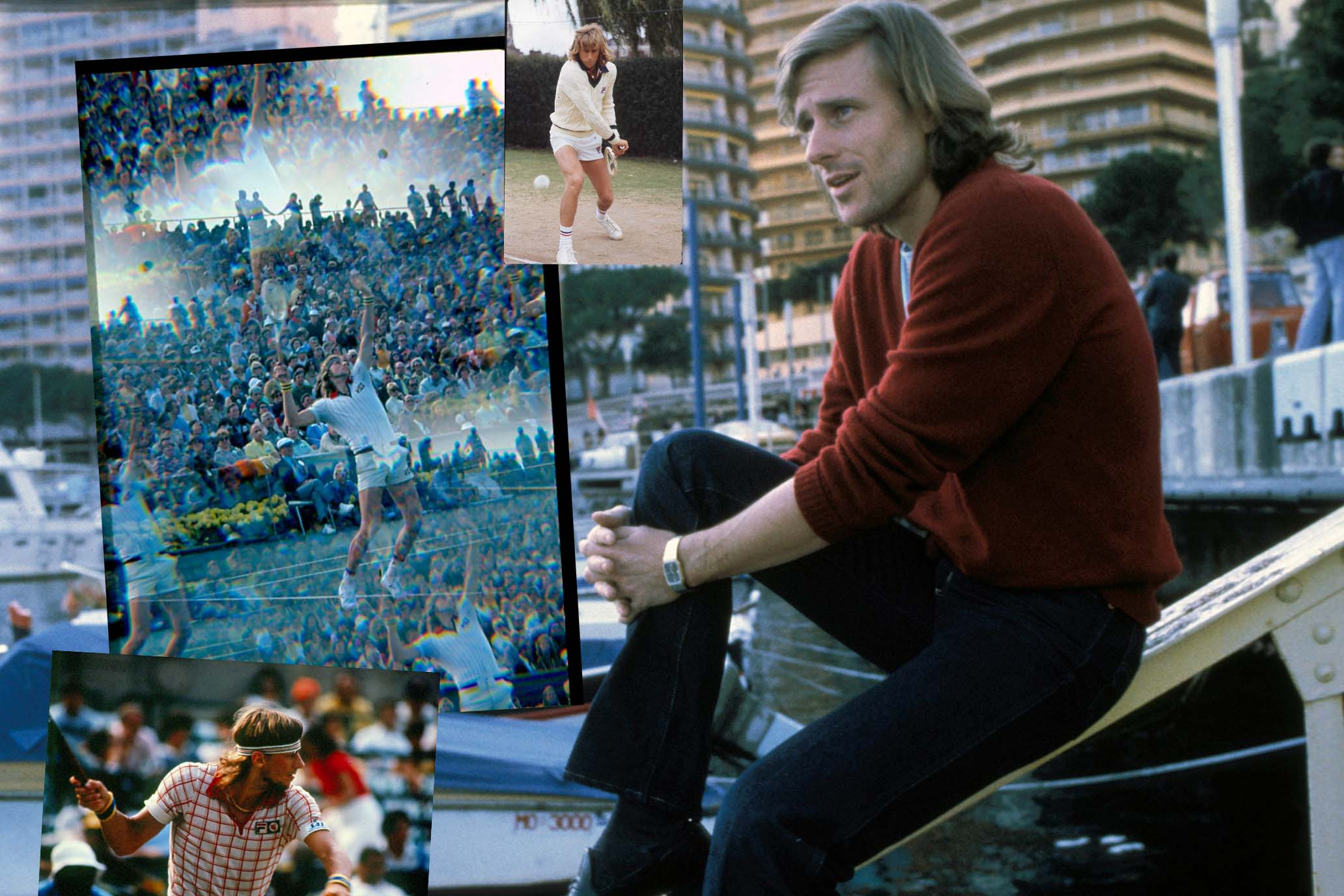

In the literature department I’ve occupied in my mind since the summer I started playing tennis more than 50 years ago, there is a course titled Tennis Belles Lettres that explores the autobiographies of tennis legends. Billie Jean King crafted a tale of destiny. Jimmy Connors took on the world. Andre Agassi dissected his love-hate relationship with tennis. John McEnroe dissected his love-hate relationship with himself.
What should we expect from Heartbeats, Bjorn Borg’s new autobiography (as told to his wife, Patricia Borg)? While the four tennis legends listed above have issued ample public comments for decades, Borg has been exceptionally silent. “For me,” he writes, “standing in front of cameras and talking at press conferences was torture.” As anticipated, a request to interview him for this story was declined.
Nicknamed the Ice Man for his unflappable behavior in the heat of battle, Borg’s exceptional reticence—particularly when juxtaposed against the heat generated by his primary rivals, McEnroe and Connors—only added to the aura he’d long built as tennis’ quintessential cool pop icon. In 1973, the month he turned 17, Borg burst onto the scene with a quarterfinal run at Wimbledon, triggering what was dubbed Borgmania. The Swede with the long blond hair and swimmer-like body emerged as a one-man version of the Beatles, in London that debut year and for the duration of his days at the All England Club escorted by a cordon of British policemen shielding him from teenyboppers and paparazzi, evoking memories of A Hard Day’s Night. First alongside Connors, later with McEnroe, accompanied by poet-musician Guillermo Vilas and disco-era darling Vitas Gerulaitis, Borg by the end of the ’70s had emerged as the lead attraction in tennis’ transition into the rock ’n’ roll era. Prior greats were crooners. These men were electric.
Given Borg’s on-court achievements and crossover popularity, it would have been easy for him to craft a book filled with mild commentary about notable matches and a smattering of the celebrity-laced tales that invariably accompany the journey of a highly accomplished athlete who, once retired from competition, spends the balance of his or her life as the custodian of an image. Should you only seek those, rest assured: Places like the ’70s hot spot Studio 54 and the All England Club each receive appropriate measures of coverage.
“I sat there wondering what had gone wrong,” Borg writes about his state of mind after the 1980 Wimbledon final versus McEnroe had gone into a fifth set despite the Swede holding seven championship points. “John, meanwhile, was fired up, like the young rebel he was.” But as McEnroe would say, let’s face it: A few clicks on YouTube to see the actual match—most notably, its 34-point fourth-set tiebreaker—more eloquently display what proved to be Borg’s fifth straight Wimbledon title run. As I’ve learned firsthand from covering tennis for more than 40 years, the participants speak best with their racquets.
But to his credit, Borg digs into other areas, calling himself out repeatedly for character flaws and regrettable occurrences. “I was so used to being the centre of attention and having someone look after me, ever since I was a kid,” he writes. “If no one was watching, I could go completely off the rails.”
Addressing his long-rumored penchant for substance abuse, Borg writes, “To this day, I’m ashamed just thinking about it. That was the worst shame of all, that my drug problem had reached such a level, with such serious consequences, and all in front of my own father. I didn’t even ask the doctors or nurses how close I’d come to dying. I didn’t want to know.”
Along with this come accounts of failed romances, death threats, and, most recently, an aggressive form of prostate cancer. As Borg describes yet another unenjoyable off-court moment, “The doctors said I would have died if I hadn’t had the surgery. Maybe I had fooled myself into thinking I had a choice.”
Most endearing is the high regard Borg shares for two men, both of whom died in 2008. One is his father, Rune: “Dad was the rock of the family.” The other is his longstanding coach Lennert “Labbe” Bergelin: “Labbe’s huge heart was dedicated to tennis, and he was fantastic with us juniors.” Borg eventually hired Bergelin to become tennis’ first full-time traveling coach.
Here we tap into Borg’s legacy. So subdued is Borg that it’s easy to forget that he was a tennis revolutionary. In addition to the new step of having a handler in Bergelin, Borg was the first player who made significant topspin the essential part of his arsenal. While others such as Lew Hoad, Rod Laver, and Manuel Santana were able to hit many a topspin drive, they’d done so mostly as a supplement to flatter strokes and extensive all-court play. But Borg was primarily a baseliner, his whipped and dipped ground strokes literally altering the trajectory of where the ball went, how points were built, and the whole matter of contact point management. From what Borg commenced, follow the high-bouncing line to such greats as Vilas, Ivan Lendl, Andre Agassi, Rafael Nadal, Novak Djokovic, and Jannik Sinner. Borg literally changed the shape of tennis.
But did Borg’s making prove his undoing? From the obsessive training rituals he and Bergelin adhered to like monks to a shrine, to the narrowness of his attrition-based playing style, to the carousel-like itinerary of tournaments and lucrative exhibitions that blossomed during tennis’ new Technicolor era, it appears that all the ingredients were in place for Borg to grow anxious and world-weary. Describing life in 1980, in the midst of a three-year run when he would dazzle the world with victories at Roland-Garros and Wimbledon, Borg writes that, “despite how well everything was going, I started to feel a creeping sense of panic…. The only time I got any real quiet was in my hotel room, and even that had started to feel more and more like a prison.”
A fatigued Borg took off the 1982 tennis year. The public premise was that he would compete again in ’83. The metaphoric movie trailers for Borg’s return were a series of exhibitions he played throughout ’82. I covered several of those, and the anticipation of Borg back in the mix ran high. But Borg has now issued a confession. Appearing on Johnny Carson’s late-night TV show in July ’82 two days before playing Connors, he writes that, “I talked about having many more years of tennis ahead of me. Of course, none of that was true.”
So it came to be that in January 1983, Borg announced his retirement. Over the next couple of years, he’d play a few more matches, mostly out of obligation. There’d also be a brief return to the tour in the early ’90s, Borg by then unable to compete with his prior effectiveness. Later came fun and games on the emeritus circuit more formally known as tennis’ senior tour.
The result is that a spirit of sadness pervades this book. If life has done well by Borg, tennis has been a mixed bag. He in large part was the sport’s first burnout case, setting the foundation for the likes of McEnroe and Agassi to eventually write books that thoughtfully explored the sport’s toxic qualities. This stream of literature was different from prior tennis books. Tales such as Arthur Ashe’s 1975 work Portrait in Motion and Gordon Forbes’ 1978 work A Handful of Summers depicted the traveling circus as a group of merry marauders, happy to be adults playing a game.
As for Borg, by the end of 1981, a darn good year considering he’d beaten Lendl in a five-set Roland-Garros final and only lost the Wimbledon and U.S. Open finals to an inspired McEnroe, at all of 25 years old, the carefree Beatle had given way to the jaded, late-stage Elvis: caught in a trap. “I was let out to play my matches,” writes Borg, “expected to perform, then locked back in again.” But the prison also made him rich. In that fantasized literature class, what would the professor teaching this book make of the gain-pain ratio between Borg’s youthful dreams, accumulation of wealth, and adult nightmares he appears to have at last recovered from?

PURE, ORIGINAL TENNIS — SIGN UP!
Sabalenka and Swiatek: The Great Rivalry That Isn’t
Sabalenka and Swiatek: The Great Rivalry That Isn’t
Sabalenka and Swiatek: The Great Rivalry That Isn’t
The two best players on the WTA Tour should be a matchup for the ages. So far it hasn’t been.
The two best players on the WTA Tour should be a matchup for the ages. So far it hasn’t been.
By Owen Lewis
September 17, 2025
Aryna Sabalenka and Iga Swiatek after their epic clash in Madrid, 2024. // Getty

Aryna Sabalenka and Iga Swiatek after their epic clash in Madrid, 2024. // Getty
I can think of no other explanation: There is a curse on the Iga Swiatek–Aryna Sabalenka rivalry. They have shared seven of the last 12 major titles on the WTA Tour. They have hoarded the No. 1 ranking since early 2022, ceding it only to each other since Swiatek first scaled the mountain in April that year. They have played cinematic, all-consuming three-setters in the late rounds of majors and the finals of the Madrid Open. Their rivalry will decide the better player between them, but likely also the best player of the generation. Swiatek leads every meaningful statistical category: She has more majors, has more weeks at No. 1, leads the head-to-head, and is three years younger. But over the past three years, Sabalenka has gone deep at every single major and might even have matched or exceeded Swiatek’s major-title count had she been able to consolidate more leads in semifinals and finals. During this stretch, my eyes have told me Sabalenka is the better player.
I’m really guessing when I say that, though, because Sabalenka and Swiatek have played just once this year, and only two of their 13 matches were at majors. Neither of those was in a final.
Roland-Garros in 2023 should have been the moment. Swiatek, untouchable clay empress, breezed to the final. Sabalenka, who had just won the Australian Open, had Karolina Muchova pinned at 5–2 and match point in the third set of their semifinal. She didn’t convert the match point, got broken, then failed to win a point against Muchova’s serve when she had the opportunity to break for the match. With Sabalenka serving at 5–5, 40–15 and a tiebreak in sight, the ship seemed cautiously upright once again. Not so: Sabalenka double-faulted away both game points and lost the third set 7–5. Sabalenka has authored several spectacular collapses in similar moments, but this remains her signature meltdown.
Okay, we thought. A freak choke, but they’d make the major final happen before long. An unexpectedly dramatic Swiatek–Muchova final made us forget all about the loss. But the ensuing hard-court majors failed to produce the matchup, too. This time it was Swiatek suffering upset losses that again kiboshed the matchup. Back in Paris in 2024, Sabalenka picked up a stomach bug and slid out in the quarterfinals—the only time in two years she’d departed a major before the last four. Jasmine Paolini was waiting in the semis, whom Sabalenka likely would have crushed to meet Swiatek in the final.
The 2025 Australian Open prolonged the tease to the point of agony. Sabalenka had looked well below her best for most of the tournament but played an authoritative semifinal to make her third straight title match in Melbourne. Swiatek, razor-sharp for the first five rounds, chiseled out a match point on serve in the third set of her semifinal against Madison Keys. Once again, we were one point away from Sabalenka–Swiatek in a major final, and this time it seemed a lock: Swiatek had never lost from match point up before in her professional career. Naturally, she did here, because of the curse. (Also Keys’ boulder-heavy ground strokes.) Swiatek led the fateful 10-point tiebreak all the way up until 8–7, only to lose the final three points. I saw that Sabalenka–Swiatek final die in person, courtesy of a ticketed fan departing early. I stared raptly at Rod Laver Arena’s luminous blue rectangle for the last half hour of Swiatek–Keys, unable to conceive of Swiatek losing until Keys held a match point herself.
Tennis fans often mention that Roger Federer and Rafael Nadal never played at the U.S. Open—they won nine titles in Flushing between the two of them, but somehow never played. Four times Federer held a match point over Novak Djokovic to get to Nadal, four times he lost the point. In 2013 the dream matchup was foiled by a man named Tommy Robredo, who hadn’t beaten Federer in ten tries. These fans, frankly, would not have dared call the opposing magnetic forces embroiling Federer and Nadal a “curse” had they known what was to come with Swiatek and Sabalenka. Both players missing match points that would have locked in the dream final? A literal plague taking the edge off Sabalenka at Roland-Garros in 2024? It was too unlikely to be anything other than dark sorcery.
I’d respect the tennis gods for their sheer stubbornness if they weren’t depriving me of indelible memories from Sabalenka–Swiatek matches. When these two play, the intensity is weighty and constant, even in blowouts. Last year, Sabalenka crushed Swiatek in Cincinnati in her easiest win of the whole rivalry—but Swiatek still saved an astonishing nine match points, forcing Sabalenka to hit a wickedly angled backhand return winner to convert the 10th. And who could forget their 2024 Madrid final, the best match of the year? One point from victory, Sabalenka hit a deep return that figured to set her up to attack on the next shot, only to watch Swiatek pound it for a winner herself. Sabalenka has no shortage of nightmare-fueling losses in huge matches; this is one of a very few she can look back on and honestly tell herself she did nothing wrong.
The lone edition of the rivalry this year, in the Roland-Garros semifinals, was played at an impossible standard of precision and proaction. It felt like watching surgery, and only partly because I had a writing assignment that depended on Swiatek losing at the clay major for the first time in three years. This was the highest-level WTA match of the year, a subpar Iga notwithstanding. Sabalenka played with raw, determined aggression to punch through Swiatek’s defenses. She didn’t even hit the hardest forehands of the day, so desperate and willing was Swiatek to take the initiative first. Each shot that failed to squarely hit its target was promptly punished. The match was a searing reminder of the magic Sabalenka and Swiatek can generate together. They have not played since.
This is not entirely the fault of the top two. The depth of talent and quality on the WTA makes the tour consistently thrilling to watch but is not especially conducive to recurring matchups. (Not like the shallow ATP, where Alcaraz–Sinner finals are likelier to be derailed by assorted physical ailments than another tennis player.) Amanda Anisimova and her wrecking-ball backhand spoiled the party at both Wimbledon and the U.S. Open. There is no shame in losing to her, or to the other players who have spoiled the dream matchup this season.
But watching Sabalenka and Swiatek play beautifully around each other without engaging directly does leave me wanting, and not just for their on-court harmonies but for a concrete answer of which player is better. This battle likely won’t have a clear winner for several years but has me transfixed. If only it weren’t being fought at long range.

PURE, ORIGINAL TENNIS — SIGN UP!
Alcaraz and Sabalenka Summon the Tornado
Alcaraz and Sabalenka Summon the Tornado
Alcaraz and Sabalenka Summon the Tornado
Painful losses at Slams were the catalyst for the US Open champions.
Painful losses at Slams were the catalyst for the US Open champions.
By Carole Bouchard
September 12, 2025

Aryna Sabalenka and Carlos Alcaraz are going to need bigger trophy cases. // Getty

Aryna Sabalenka and Carlos Alcaraz are going to need bigger trophy cases. // Getty
Sometimes the best thing that can happen to a winner is losing. Carlos Alcaraz and Aryna Sabalenka showed us this by clinching titles in New York, having both bounced back from crushing losses at Wimbledon in June (not unlike Jannik Sinner, who prevailed in London after losing an epic five-setter in Paris to Alcaraz, despite three match points in the fourth set). When you’re already the best, you need a much stronger trigger to reach the next stage. And what better motivation than losing in the last stretch of a Grand Slam when your sole tennis ambition is to win them all?
To Sabalenka’s credit, she’s undoubtedly the player who has evolved the most and in the most radical ways to become the champion she is now. She had to control her temper, control her power, clean up her technique (that serve has come so far!), and find a way to bring variety to a game that seemed immune to it. Despite all that progress, she had yet to win a Slam in 2025 and seemed to need a double dose of defeat to get over the last hurdle. The World No.1 didn’t get there after losing to Coco Gauff in a messy Roland-Garros final. No, she needed a loss in the Wimbledon semis to an ascendant Amanda Anisimova for her to buckle down.
Carlos Alcaraz was already in control of most of what he needed, but his problem was Jannik Sinner, who continues to level up. The Spaniard, who won his sixth Grand Slam title in New York and returned to the rankings throne for the first time in two years, was on the verge of losing ground to the Italian, and he knew it. More to the point, his coach, Juan Carlos Ferrero, knew it. The margin on clay was thinner than thin, and the Wimbledon title was gone, but that loss birthed Carlitos Version 2.0 in New York, just as those tough losses triggered Aryna’s change of mindset. No champion can afford to remain in denial or delusion. And so, both asked the mirror on the wall and didn’t like the answer that came back.
Going into Wimbledon this year, Sabalenka said that “it felt like, if I made it to the final, it means that I’m going to win it. And I didn’t expect players to come out there and to fight. I thought that everything was going to go my way easily, which was completely the wrong mindset.” It is extraordinary that Sabalenka, who has gone through heartbreaks in Grand Slams before putting the puzzle together, and who faces an era where Iga Swiatek has been as dominant—if not more—than her, felt she would be an invincible force the moment she set foot in the final of a major.
Champions of that caliber need a healthy dose of confidence and delusion in equal measure, but the key word here is “healthy.” Being denied again at Wimbledon was the perfect shock to the system for Sabalenka. And the US Open ended up being the perfect exorcist for all her ghosts, as she won that fourth Grand Slam title against Anisimova, her SW19 nemesis, by remembering she wasn’t owed a Grand Slam title but had to fight tooth and nail for it.
“I really wanted to give myself another final, to prove to myself that I have learned those tough lessons and that I can do better in the final,” she said ahead of the US Open final. “I have learned the lesson, and I will never behave like that again. I let my emotions take over, and I am not like that anymore. It will never happen again. I have to trust myself and give it my all. At Wimbledon, I doubted myself a lot, and that is the main reason for my unforced errors.” And so at Wimbledon, she finally made that promise to herself that it wouldn’t happen again. And, at least in New York, it didn’t.
Alcaraz, who suffered for five and a half hours in Paris to keep his crown, already knew all of this, of course, when he landed in New York. But what he didn’t know anymore after Wimbledon was how to keep Sinner at bay. And so Ferrero found him the answer: a two-week “let’s take him down” retreat. Here Wimbledon didn’t trigger an overhaul but an epiphany. By starting to plan for Sinner more originally, Ferrero pushed Alcaraz to get back to himself. And so, to return to a genius kind of chaos. All the angles, all the effects, all the variations. Everything everywhere all at once. Summoning a tennis tornado like only he can.
“The consistency of my level during the whole tournament has been really high, which I’m really proud of, because it’s something I’ve been working on. Here I saw that I can play really consistent,” Alcaraz said after the final. Wimbledon had shown him that to stay ahead of Sinner, he had to reach the Italian’s level of steadiness. Now, finding steadiness in that tennis storm he’s been delivering is quite the feat!
Sinner had already used his trigger power from Paris to win Wimbledon, so a newly improved and steady Alcaraz must have come as quite a shock. The challenge now for both winners is to continue to train with a sense of urgency, despite being at the top of the rankings. Now the question is: What’s next? Can they keep their noses out in front of opponents that are just as likely to come back stronger?

PURE, ORIGINAL TENNIS — SIGN UP!
Let the Winners Fly
Let the Winners Fly
Let the Winners Fly
Amanda Anisimova and Aryna Sabalenka prepare for a slugfest.
Amanda Anisimova and Aryna Sabalenka prepare for a slugfest.
By Giri Nathan
September 5, 2025

Amanda Anisimova and Aryna Sabalenka before their semi-final matches. // Getty
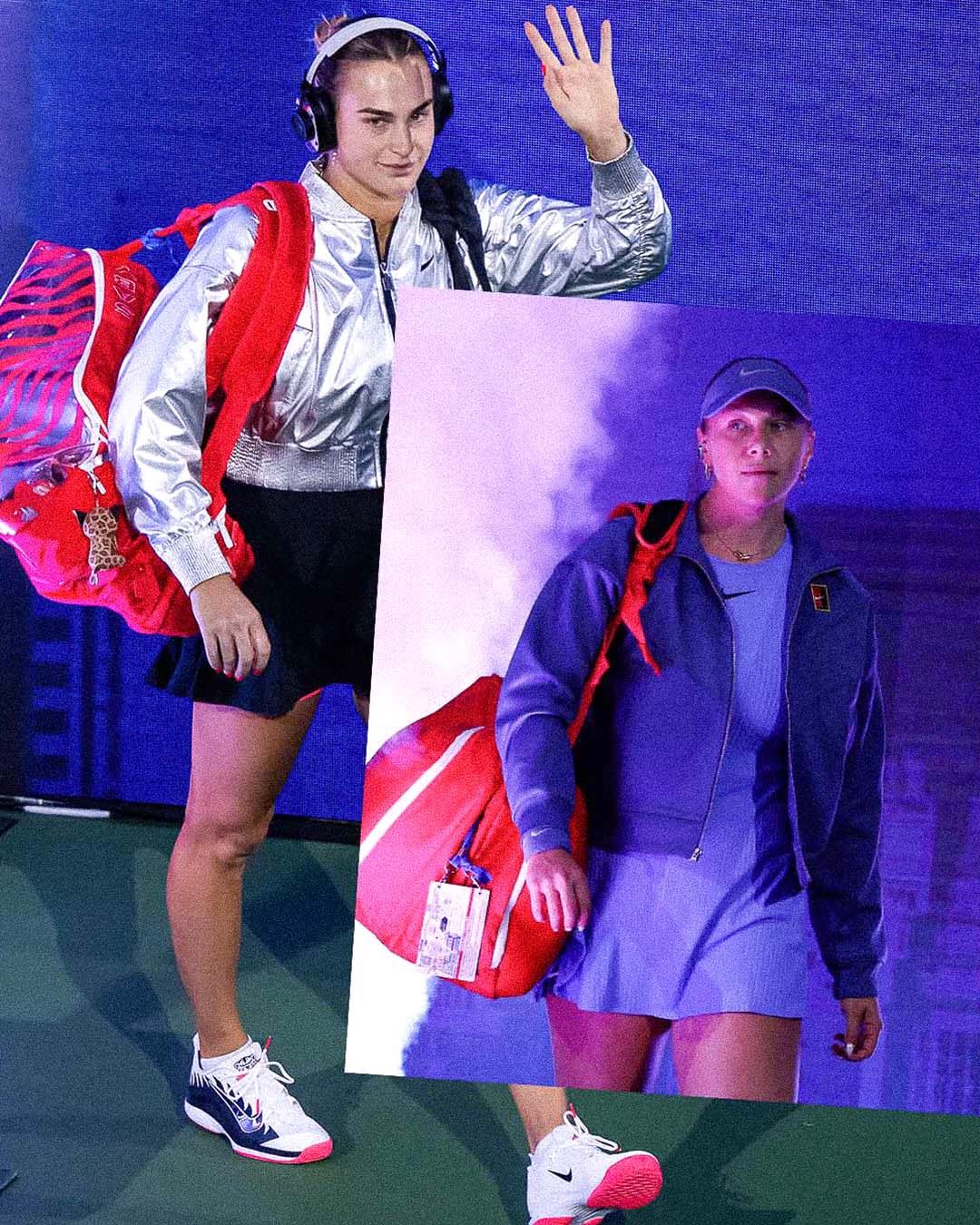
Amanda Anisimova and Aryna Sabalenka before their semi-final matches. // Getty
Quite often this semifinal Thursday is the best day of tennis that the US Open has to offer. And this one might have been the best of all Thursdays in recent memory. Two three-setters, both high-quality, and both a little nervy in the best ways.
After Aryna Sabalenka went down a set against Jessica Pegula, I began to wonder if she was on course to have the greatest Slamless season of all time. Top player in the world, deep runs at all four majors, and…none of the biggest titles to show for it? But she soon corrected her course. In truth this matchup always looks pretty comfortable for her. During a mid-match interview, Pegula’s coach, Mark Knowles, made a comment to the effect that Sabalenka appears to enjoy hitting the clean ball that comes off Pegula’s racquet.
I have always had that same impression, and it’s admittedly not so subtle a thing to pick up on, given the 7–2 head-to-head in Sabalenka’s favor heading into this match. She has the obvious advantage in offensive weaponry, and those flat, low, consistent shots from Pegula that perturb so many other opponents only seem to aid Sabalenka’s rhythm. Pegula barely put a foot wrong in the deciding set, in which she lost only four points on her serve, and somehow still lost the match—as she herself wryly observed, alongside a selfie with a post-loss Honey Deuce. There’s not all that much Pegula could have done differently in this matchup, and it must be frustrating, but to her credit, she made the defending champ work hard until the last ball, even as Sabalenka sweated through some flubbed match points.
Better still was the second match, a long shoot-out between Naomi Osaka and Amanda Anisimova. On paper this was a match for people who like to see the tennis ball get thoroughly mashed, and the reality was everything we’d been hoping for, plus some. Both players have the power to end points at a whim, and both seemed to grasp the nature of the matchup: Whoever first surrendered a sizable patch of open court was going to lose the point. This was not to be a match won in slow, grinding rallies. Second serves were feasted upon at all times. Sometimes so aggressively that, for long stretches of play, it looked as though the server was somehow at a disadvantage. One Osaka return came in so fast it toppled Anisimova onto her back; Anisimova, for her part, won a startling 66 percent of points when facing second serves.
The scoreboard was tight from start to finish—they split the first two sets in tiebreaks—and the pressure was inescapable. At one point, Anisimova bonked herself on the head quite hard with the racquet, and at others, Osaka chucked hers around the court. Anisimova loosened up in the match’s waning moments, though, reeling off those eerily pure backhands that are her singular stamp on the game, and she managed to serve out the match. This semifinal was the clearest sign that both players, who had stepped away from tennis for personal reasons, have completed their journeys back to the very top of the sport. Now the WTA has been blessed with some high-profile rivalries that we couldn’t have anticipated this time last year, or that we did not expect to ever be so relevant again. Saturday’s final is one of those: Anisimova versus Sabalenka, a rematch of their Wimbledon semifinal, and the epitome of first-strike tennis. Let a thousand winners fly.




